


44
45
46
47
Reporting period:




44
45
46
47
Reporting period:
Publication of Activity Report 2023 in 2024 (reporting: 1 January 2023 – 31 December 2023)
Publication management:
Stéphanie Deleul - Arvesta
Sustainability advice: KPMG Belgium www.kpmg.be
Concept and creation: 3gunna Studio 3gunna.com
Editorial: Nele Kempeneers www.pennenvrucht.be
This Activity Report 2023 is the fourth of its kind for Arvesta. It tells our story - a story we are immensely proud ofand allows us to report transparently on our progress from year to year.
Photography: Ben Celis - Arvesta Jonathan Vahsen www.jonathanvahsen.be Kris Van de Sande www.krisvandesande.be
For further information, we invite you to regularly visit our website and social media: www.arvesta.eu - www.linkedin.com/company/arvesta
Printing: Sustainable printing zwartopwit.be


Questions or feedback?
Contact: Stéphanie Deleul +32 (0)476 94 35 65, stephanie.deleul@arvesta.eu
For more information: www.arvesta.eu


With our solutions and innovations, we ensure better returns for our customers, an exceptional shopping experience for our satisfied consumers, and healthy, sustainable food on the table.

NiekDepoorter Chief Executive Officer
Everything starts with the farmer. A simple truth, but one we should not lose sight of. Thanks to the efforts and knowhow of our farmers and horticulturists, we enjoy safe and healthy food. They deserve our support and respect for their hard work in producing food to the highest standards of quality, safety, traceability, and animal welfare. They are essential and indispensable to our society and prosperity. That’s why, at Arvesta, we want to ensure a long-term future for our farmers and horticulturists.
We spare no expense when it comes to our customers. Our customers are farmers, horticulturists and consumers. Together with them, we constantly look for pragmatic and innovative solutions. The result? Better returns for our customers, an exceptional shopping experience for our satisfied consumers, and healthy, honest food on the table. Thanks to Arvesta’s unique position in the sector, we can support our customers throughout the entire process - from field to future.
Over the past decade, Arvesta has undergone an impressive evolution. Our turnover has increased from 1.3 billion euros to 1.9 billion euros. Arvesta has become a strong performing company in Belgium and in the Northern European agrobusiness by delivering excellent value to 30,000 professional agricultural and horticultural customers, as well as one million consumers.
In 2023, Arvesta realised a turnover of 1.9 billion euros, in line with our absolute record year, 2022. This is mainly due to our focus on organic growth, but we have also grown through strategic mergers and acquisitions.
In 2023, we achieved several significant successes. Aveve was voted 'Retailer of the Year' and 'Best Webshop 'Garden'’. For the 16th time in a row, we were voted 'Best Retailer ‘Garden'’ and 'Pet Retailer'.
Within our Agri & Horti Business Unit, we acquired the majority in the operations of Van der Hoeven, a world player in high-tech, horticultural greenhouses.
Our Animal Nutrition Business Unit took a big step forward with the acquisition of ForFarmers' Belgian operations. We also launched a brand-new feed brand called Proxani, alongside our strong animal nutrition brand Aveve. This way, we continue to invest in our brands and build the agriculture of tomorrow.
Arvesta is a leading player in the agricultural sector and is strongly committed to sustainable innovations. We have a clear vision based on ESG (Environment, Social, Governance) principles. Our added value for farmers and horticulturists lies in the solutions we offer for the challenges they face. Our high-tech greenhouse horticulture, for example, with strong brands such as Hortiplan and Van der Hoeven, peaks in terms of turnover and is a remarkable trendsetter in sustainable food production under glass.
We are committed to the well-being and safety of our employees. Arvesta scored a historic 91% employee satisfaction rate in our Engagement Survey. This proves that our people are at the heart of our success. We also strive for an excellent customer experience and promote responsible consumer behaviour. So, we start 2024 with a healthy foundation, and together we continue to build on our positive growth story.
As always, successes and challenges go hand-in-hand. In both human and climatic terms, 2023 was a turbulent year. The violence of war in Ukraine continued and new conflicts like the one in Gaza emerged. We felt the extremes of global warming: it was one of the warmest years since records began and we experienced a wet spring and autumn. 2023 was by no means a good year.
Beet and potato harvesting, for instance, fell through. Due to the perils surrounding the nitrogen agreement and a downward market with sharply fluctuating, often low prices, the agriculture and horticulture sector ended up in a perfect storm.
2023 was also a difficult year for Arvesta. The combination of highly volatile markets with our ambitious investment plan for the agriculture of the future resulted in a decline in our net result in 2023. In addition, the impact of climate change - we think of the gloomy, wet, spring and autumn - led to weaker figures in our Retail and Agri & Horti activities.
Despite the geopolitical and climatic vicissitudes, Arvesta will not deviate from its course, quite the contrary. We look to the future with confidence. We will continue to pursue a very safe financial policy and we will continue to invest strategically. We do this because it is important to further strengthen the agricultural sector and our organisation.
We firmly believe in the agriculture and horticulture sector. More than ever, we believe that a level playing field is crucial for farmers in Belgium and across Europe. A level playing field is not just about fairness, it is about the long-term viability of our agricultural sector, the well-being of farmers, and the quality and impact of food production for us all.
Despite this rapidly changing and uncertain reality, I see plenty of 'reasons to believe'. We can make a difference as Arvesta - together with our customers. With our strong foundations, with our Experts in the field, and with an investment budget of no less than 250 million euros for the period 2021-2025, together we continue to set course for a sustainable agricultural and horticultural future. we resolutely side with the customer - everything starts with the farmer.
At Arvesta, sustainability is about adding value to our society. It is about shaping the world we want to live in.
January
Aveve launches www.aveve.be with a webshop offering even more online shopping fun.

April
ForFarmers sells Belgian compound feed business to Arvesta.
May
Brand new Aveve shop in Gembloux is all about sustainability, experience, and inspiration.

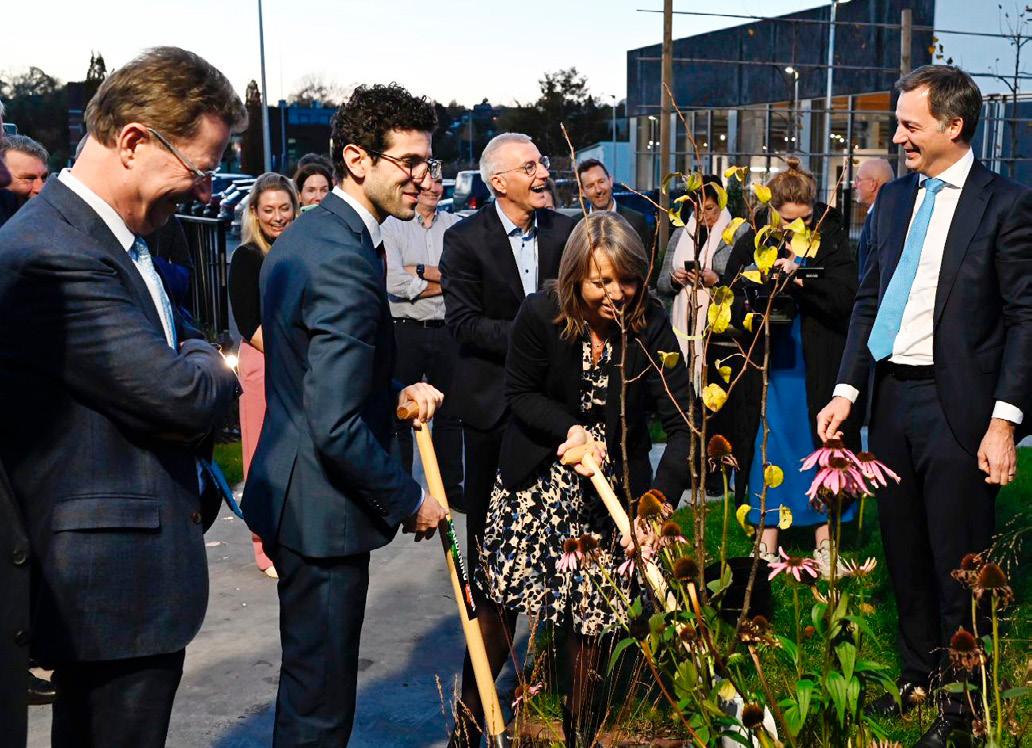
November
New, climatefriendly, Arvesta headquarters in Wilsele inaugurated.
June
Cristal, Arvesta, and Belgian farmers double malting barley production in one year.
September
Competition authority approves acquisition of ForFarmers Belgium by Arvesta
October
Arvesta introduces Proxani, the brand name that replaces ForFarmers Belgium and Dumoulin; it will stand alongside Aveve as a strong animal feed brand. For


December
Arvesta is the first in Belgium to launch a 100% segregated flow of soy (meal) from deforestationfree origins.

122 YEARS as the partner for agriculture and horticulture

2.300
€250 MILLION
invested in innovation, IT, production sites, and sustainability initiatives (2021-2025)
More than 40 strong brands across 3 industries

Agri & Horti
International operations with offices in the Netherlands, Germany, and France
1.8 MILLION TONNES global

Belgium’s market leader in seeds, grains, and plant nutrition and protection for all crops
Global market leader in mobile gully systems with Hortiplan and greenhouses with Van der Hoeven
Importer and distributor of John Deere


Arvesta aims to increase the returns of farmers and horticulturists in a sustainable and innovative way to further grow together. We do this by optimising the use of different types of capital and resources, and by creating value with and for our various stakeholders.
Human capital
• Diversified group of 2,300 Experts in the field with 23 nationalities and 30% women.
• An average of 7 hours of registered training per employee.
• Expertise from external partners.
Financial sources
• EUR 250 million investments (2021-2025)
• EUR 466 million equity (2023)
• EUR 92 million net financial debt (2023)
Natural resources
• 78.19 TJ fossil fuel
• 175.10 TJ natural gas
• 210,000 m² of shopping fun at Aveve
Our Experts in the field guarantee farmers and horticulturists a long-term future through pragmatic and innovative solutions. The result is better returns for our customers, an exceptional shopping experience for our satisfied consumers, and healthy, sustainable food on the table.
Contributing to the Sustainable Development Goals




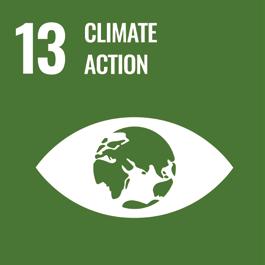


Customers (B2B & consumers)
• Animal Nutrition: 23,175 customers (B2B)
• Agri & Horti: 14,695 customers (B2B)
• 970,000 active MyAveve cardholders in Aveve Retail (B2C).
Staff
• 323 new recruits
Investors
• 100% owned by financial holding company MRBB
• EBITDA: EUR 38 million
• M&A: ForFarmers Belgium for EUR 25 million
• 2024: ESG as part of management incentive plans
• 87 preferred suppliers received Arvesta's Procurement Sustainability Assessment in 2023 and 63% of assessed suppliers received a score >50%.
• A sustainability score will be prepared in 2024 for the 3 Business Units.
• 3,434 indirect suppliers in Belgium
Society and planet
• More than €7 million in tax contributions in Belgium, the Netherlands, France and Germany (excluding social security contributions and withholding taxes)
• Arvesta serves 20 animal groups totalling some 40 million animals
• Arvesta provides 70 different crops good for 600,000 ha
• Our Experts in the field meet 700 farmers and horticulturists every day

Despite an economically difficult year, Arvesta looks confidently to the future
On many levels, 2023 was a year that will not easily be forgotten. The combination of sharply fluctuating markets with our continued investment plan for tomorrow's agriculture resulted in a decline in our net result in 2023. But our motivation to continue taking steps forward in all areas is greater than ever.
The consequences of the outbreak of the war in Ukraine were also well felt on the economic front in 2023. The second part of the year was characterised by high energy, wage, and transport costs in combination with sharply falling raw material prices. Effects that inevitably have a major impact on a company like Arvesta. Chief Financial Officer, Kris Geysels, knows all about it and is happy to explain the annual figures.
"Arvesta realised a turnover of 1.9 billion euros in 2023, in line with 2022. Gross margin was 383 million euros, which is an increase of 18 million euros compared to 2022," he points out. "If we look at consolidated
EBITDA, which is without taking depreciation into account, we see that in 2023, at 38 million euros, it is considerably lower than the 80 million euros the year before. We do have to keep in mind that 2022 was an absolute record year for Arvesta."
This decreased EBITDA in our animal feed business is mainly due to sharply declining raw material prices in the second part of the year, together with high energy, wage, and transport costs, according to Kris Geysels. Because Arvesta always purchases a certain quantity of raw materials in advance and then processes them into feeds, we may have to buy them expensively and sell the final product at a low price when market prices fall. Sharply falling raw material prices are good news for the livestock farmer but put strong downward pressure on the small margins Arvesta maintains.
But 2023 was not only a challenging year for Animal Nutrition. "The late start of spring and the flooding we had to swallow meant that sales of the Agri & Horti and Retail Business Units got off to a late start, and that
backlog could not be made up," continues Kris Geysels. “After all, good weather is a determining factor for sales of products such as seeds, fertilisers, and garden products.”
However, these geopolitical and climatic vagaries have not caused Arvesta to deviate from its course, quite the contrary. “The plans in place to make strategic investments were implemented precisely because they play an important role in further strengthening our organisation, making us more resilient,” Kris adds. “For example, not only was the acquisition of ForFarmers Belgium – and launch of the new Proxani brand – realised, but we also acquired the majority in the operations of Van der Hoeven, a global player in high-tech, horticulture greenhouses. In addition, we chose to better adapt our IT programmes to the needs of the different business units.”
The package of strategic investments that Arvesta completed is impressive. But this has a one-off impact on the result. "For the first time in more than 10 years, we suffered a net consolidated loss of 43 million euros, compared with a net profit in 2022,"
We continue to pursue a very safe financial policy.
Kris outlines. "We should not minimise that, but the reasons for this are clear and more than half of them are one-off costs and depreciation. Moreover, we continue to pursue a very safe financial policy."
The investments in Proxani and Van der Hoeven were financed entirely from Arvesta’s own resources and the group can boast equity of no less than 466 million euros and a strong 45% solvency ratio.
Remarkably, at 92 million euros, Arvesta's net financial debt was the lowest in the last five years and its leverage ratio (net financial debt to EBITDA) remains less than three and thus very healthy. "We can therefore count on a solid foundation and look confidently to 2024 with the entire organisation to further shape the agriculture of the future. The expertise of our employees, combined with our innovative solutions, is a strong offering for consumers and agricultural customers, with significant added value."
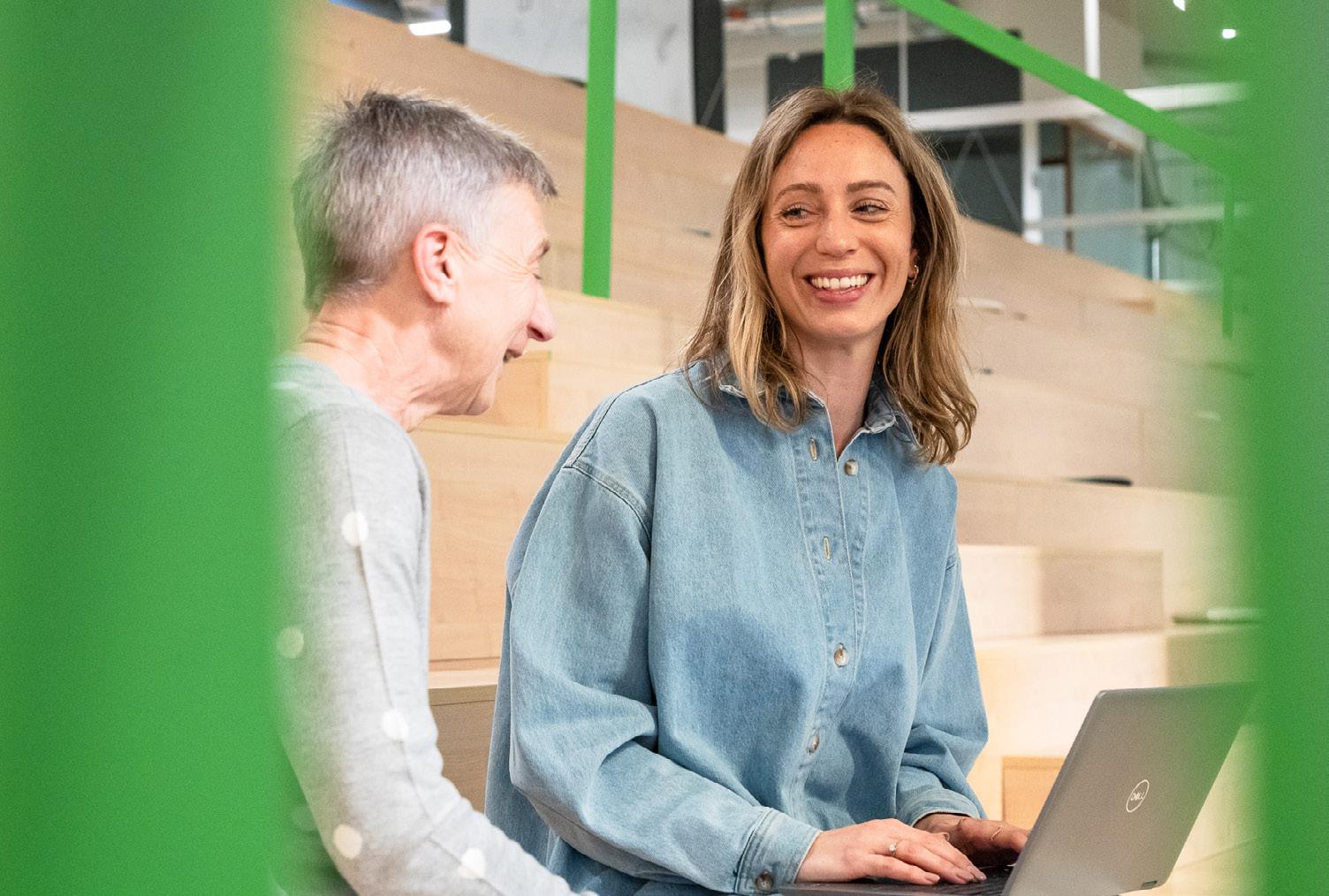
The consolidated financial statements of Arvesta BV (the 'Company') include the financial statements of the Company and its subsidiaries (together hereinafter 'Arvesta').
The consolidated financial statements provide a general overview of Arvesta's activities and results achieved.
The financial statements have been prepared in EUR million and in accordance with BE GAAP.
The financial statements and consolidated financial statements were audited by EY Bedrijfsrevisoren BV, Kouterveldstraat 7B 001 at 1831 Diegem, represented by Wim Van Gasse (A-02276).
More detailed information is available on the website www.nbb.be


The most recent version of the Arvesta Corporate Governance Charter was approved by the Board of Directors on 8 April 2022.
In this Corporate Governance Charter (the Charter), the Board of Directors explains the main aspects of its corporate governance policy within Arvesta (the Company) and, where relevant, within the group.
The Charter is based on the provisions of the Corporate Governance Code for unlisted companies (Buysse III Code (2017)). It is also complementary to the provisions on corporate governance as contained in the Companies and Associations Code (WVV (2019)) and the Company's Articles of Association.
The corporate governance rules aim to ensure efficient and transparent governance of, and effective control over, the Company. The Board believes that clear corporate governance arrangements contribute to long-term value creation.
The Charter describes the composition, responsibilities, and powers of the various bodies of Arvesta and regulates their operations.
The Charter aims to provide a clear reference framework for efficient cooperation between the General Meeting, Board, and Management of the Company.
Structure and operation of Arvesta Arvesta BV has opted for a collegiate management body ('Board of Directors').
The Board of Directors draws up the strategy, is responsible for the general policy, is authorised for all actions reserved for the Board of Directors under the FMC and the Articles of Association, and represents the Company.
The Board of Directors manages as a college and is accountable to the General Meeting, which appoints and dismisses the directors and decides annually on the discharge of the directors. The Board of Directors is also responsible for overseeing the implementation of strategy and general policy by the CEO (Chief Executive Officer or Managing Director) and the ExCom (Executive Committee).
The CEO, assisted by the ExCom, is in charge of the day-to-day management of Arvesta within the strategy and general policy approved by the Board of Directors, and of its implementation. The CEO makes proposals in this respect to the Board of Directors.
The ExCom is responsible for implementing the policy. The CEO leads the ExCom. The members of the ExCom report directly to the CEO.
For certain ad hoc matters, the members of the ExCom may be asked to provide explanations during Board meetings.
The members of the ExCom are responsible for developing proposals on the strategy to be followed within their respective areas of competence (Business Units (BUs) or corporate functions) and for implementing this strategy as part of Arvesta's strategy.
Within each BU, a 'DirCom' has been established that is responsible for implementing the strategy within the BU. The DirComs are chaired by the BU Director.
The DirCom is responsible for preparing the BU's budget, which contains the BU's short- and (medium-) long-term strategy.
Acts and decisions that fall within the day-to-day management of the company have been delegated by the Board of Directors to the ExCom on the basis of an Authority Matrix, which defines the decision-making and signature powers.






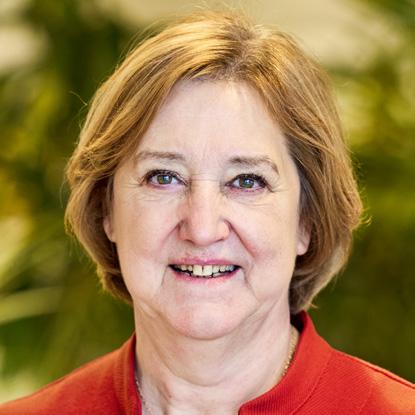
Vaesen Non-Executive Director

Rianne Covensvan Tilburg Non-Executive Director
At the General Meeting of 30 May 2023, the mandates of Messrs Patrik Haesen, Patrick Horten (also member of Arvesta's audit and risk committee) and Pieter Verhelst expired.
The General Meeting decided to extend these mandates until 31 December 2023 so that in the meantime the right profiles could be sought to fill these mandates. On 31 December 2023 Mr Luc Gijsens' mandate as independent director and chairman of the
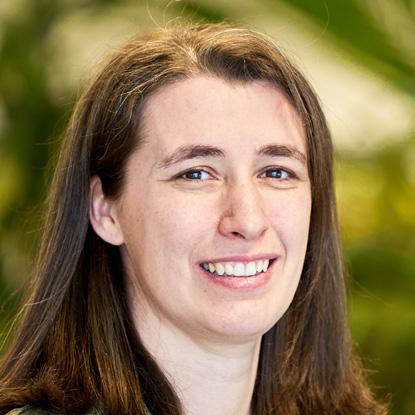



Director
audit and risk committee also came to an end because he had reached the statutory age limit. A special general meeting decided on 14 July 2023 to appoint two new directors, whose mandate started on 1 January 2024 and runs until the Annual Meeting in 2027.
These are Mr Marc Hofman as independent director on the one hand, and Ms Ilse Van Loo as non-executive director from MRBB on the other. Mr Marc Hofman was appointed
Stefaan Gheeraert Non-Executive Director
by the Board of Directors as chairman of the audit and risk committee, succeeding Luc Gijsens, while Ms Ilse Van Loo replaces Patrick Horten on this committee. Mr Pieter Verhelst's mandate was renewed on this occasion until the General Meeting in 2027.
Mr Eric Lauwers, CEO, announced his departure as CEO of Arvesta in autumn 2023.
On 23 November 2023, the special General
Meeting appointed Niek Depoorter as the new director and CEO from 1 January 2024. His appointment as CEO was ratified by the Board of Directors on 22 December 2023.
In succession to Mr Patrick Horten, the Board of Directors decided on 29 March 2024 to propose Mr Bart Van der Straeten as a new director to the General Meeting in May 2024.
Niek Depoorter Executive Director – CEO Raf Sels Non-Executive Director Sonja De Becker Chairman of the Board Kurt Deketelaere Non-Executive Director Marleen Marc Hofman Independent Ilse Van Loo Non-Executive Director Sophie Dutordoir Independent Director Bart Van der Straeten Non-Executive Director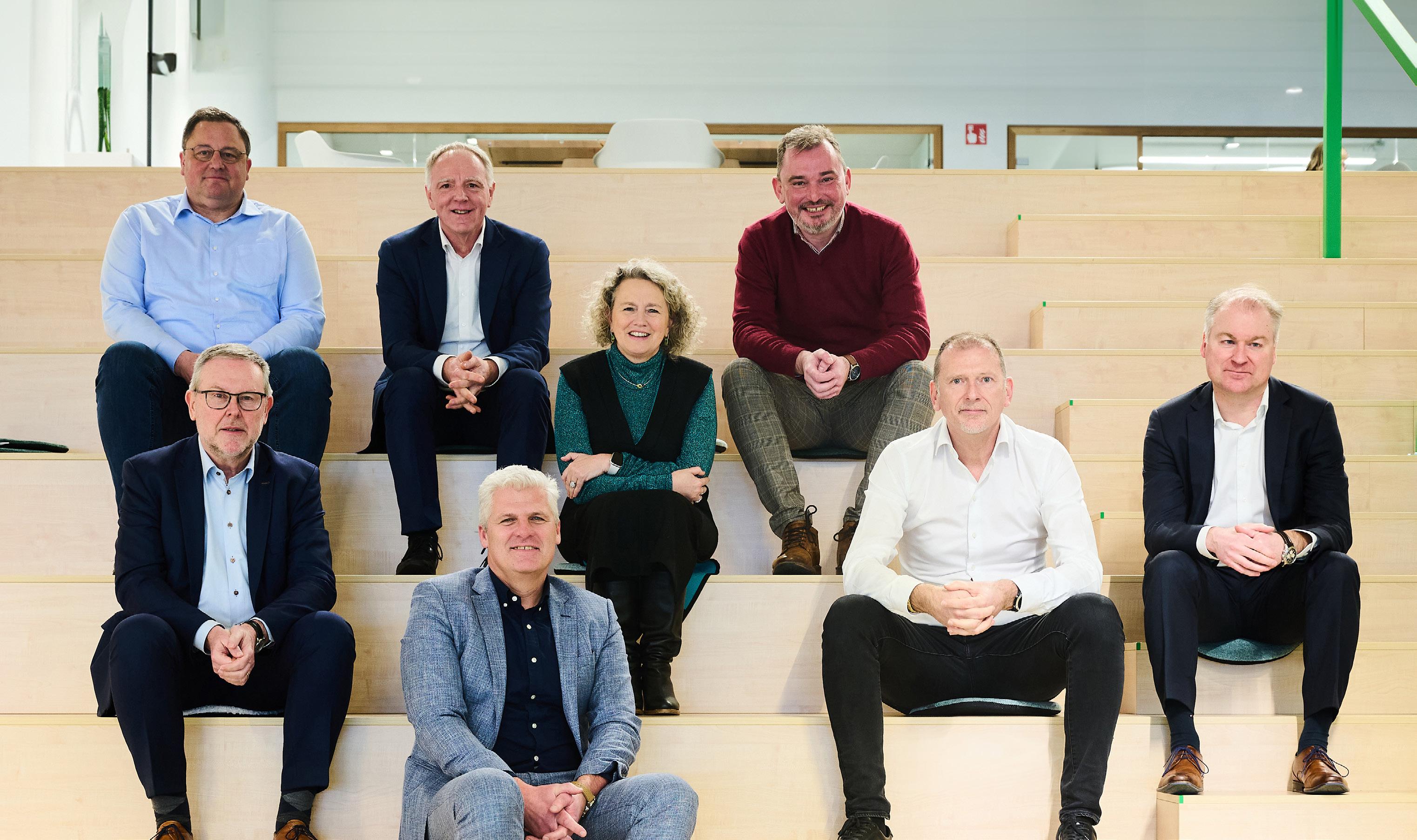
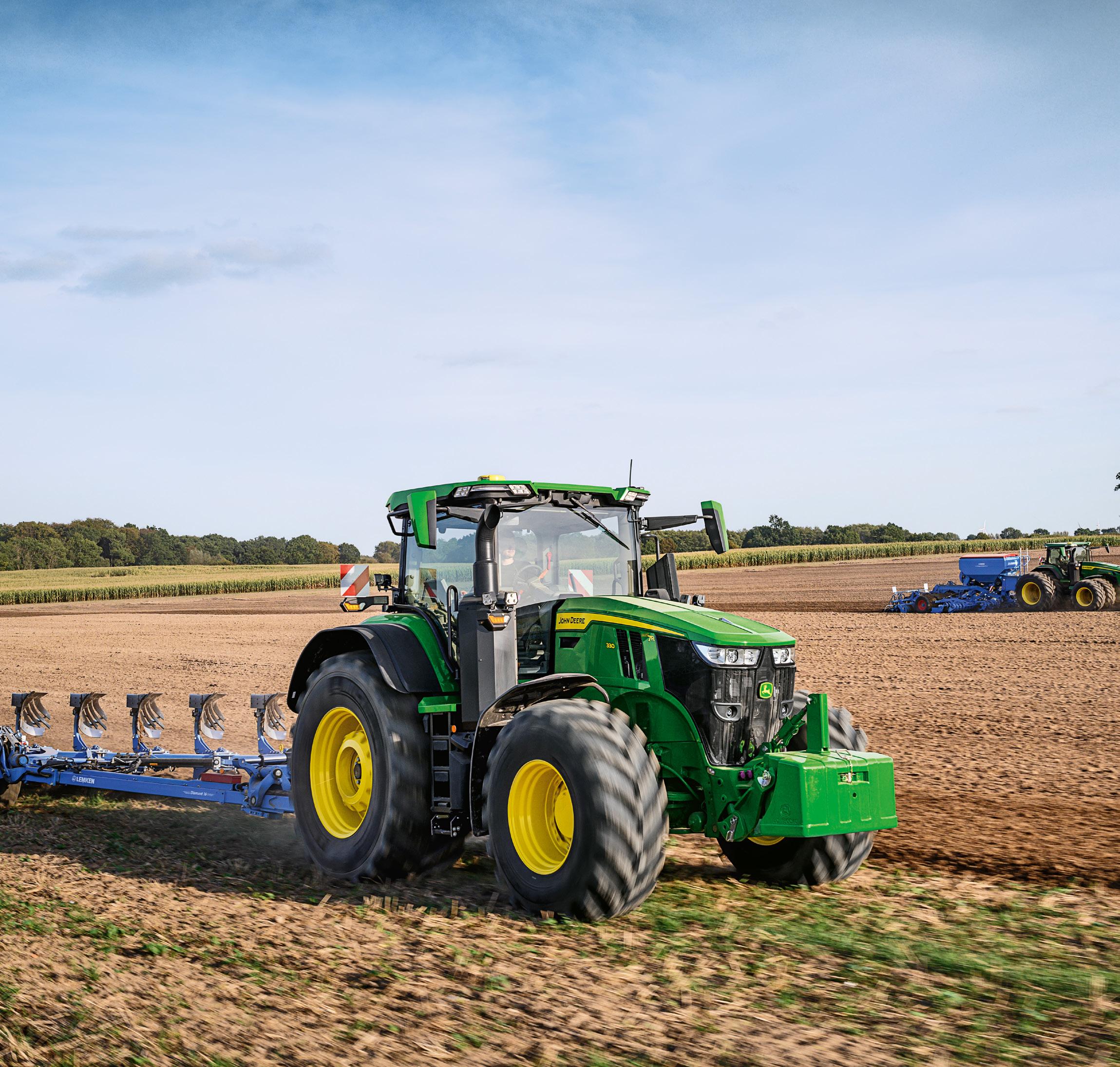






















The Animal Nutrition Business Unit works closely with the livestock sector, which is experiencing many successes and challenges. Together with livestock farmers, we are part of a larger value chain that prioritises qualitative, ecological, and economically responsible food production. We do this in a thoughtful way to ensure the welfare of the livestock farmer and the resilience of the agricultural sector.

In 2023, BU Animal Nutrition did this by taking several steps that are covered further in this Activity Report. But we also continue to work on forging close links between suppliers, livestock farmers, processors, and retailers, while making the link to consumers and society.
We are initiating concrete pilot projects that offer important opportunities to our partners in the value chain. For example, in 2023, a project was launched with a feedstock supplier aiming to achieve a fully segregated stream for soy of guaranteed deforestation-free origin.
This makes us pioneers in Belgium and brings us one step closer to the European objective of switching completely to soy from non-forested areas by 2025. Pilot projects have also been launched in co-creation with food and retail partners for the dairy, beef cattle, and pig sectors. We are looking at which innovative solutions can answer the challenges of the future and how this can be translated into an economically profitable model for all partners, including the farmer.
Raising healthy animals starts with high-quality feeds and additives. And that is exactly what Arvesta excels at, thanks to our Animal Nutrition Business Unit. From professional livestock farmers to owners of hobby animals, our customers can count on the best feeds and expert advice.
we always have to work hard, especially in economically challenging times. Dirk Van Thielen, Business Unit Director of Animal Nutrition, looks back on an eventful year. "When farmers are struggling, we feel it too. The increase in the poultry market could not make up for the sharply falling demand for pig feed. Margins, which were already very small in our sector, were under pressure, partly due to falling raw material prices."
With 14 production sites spread across Belgium, the Netherlands, France, and Germany, together with annual sales of some 1.8 million tonnes, Arvesta is a leading player in the animal feed market. In Belgium, we have been the clear market leader for many years. But to maintain this strong position,
Despite the turbulent market situation, Arvesta could also call itself the Belgian market leader and trendsetter in animal feed in 2023. A fine achievement by the various high-performing brands in the Arvesta stable.
High-quality feeds and expert advice are how we make a difference.
"Takeovers like that of ForFarmers Belgium in 2023 put us more firmly in the saddle. The fact that we chose to merge ForFarmers Belgium and Dumoulin into Proxani, a strong new brand alongside Aveve, is a wellthought-out strategy. These two big flagship brands, together with our other brands, are very important to reach cattle and hobby farmers at home and abroad," says Dirk.
 Dirk Van Thielen Business Unit Director Animal Nutrition
Dirk Van Thielen Business Unit Director Animal Nutrition


Rather than betting on new acquisitions, growth in 2024 will mainly be in optimising and making the existing range and production process more sustainable. "High-quality feed and expert advice, that's how we can guarantee our customers the best value for money."

Without losing sight of ecology and animal welfare, of course. Arvesta not only commits to low-carbon feeds such as Euroclim and animal-friendly concepts such as the Spoormans feeds for Better Chicken Commitment, but also works with a separate stream of soybean meal from 100% guaranteed non-deforested areas. We also have a factory that produces only organic feeds. Antibiotics will have no place in Arvesta's feeds from 2027 onwards, while the feeds in our current range are already 99.7% antibiotic-free.
Professional feeds

Hobby and horse feeds
Feed additives
The Agri & Horti Business Unit occupies a central position in the value chain from farmer to plate. Arvesta supports farmers and horticulturists throughout the entire cultivation process. From seeds, crop protection, plant nutrition, and the use of innovative machinery, to advice and consultancy for optimal cultivation of different crops. We are also active in crop storage and procurement.

In this way, we establish links from production to consumption and involve the entire chain in our activities. This is an important added value for farmers and horticulturists, who can valorise their high-quality products via Arvesta.
2023 was a year in which, on the one hand, various innovative products and services were brought together in interesting cultivation concepts for our farmers and horticulturists. On the other hand, by expanding cultivation contracts and setting up pilot projects, we worked hard to expand our partnerships throughout the chain.
For example, our Carbon Farming Club is making the link between wheat growers working with a lower carbon footprint and buyers willing to pay a premium price for this. We also started a pilot project with a brewery to look at barley with a lower footprint in addition to the already existing local malting barley.
We want to go even further than just CO2 reduction, so in 2023 we also took the first steps towards an economic model in which the broad ecological efforts of arable farmers are valorised within the food industry.
Experts in the field make the difference

2023 was not an easy year for agriculture and horticulture, and we felt it in the Agri & Horti Business Unit. But it was also the year in which we strengthened our position in the market for agricultural and horticultural machinery, seeds, plant nutrition and protection, courtesy of the largest team of experts in the field.
As the full-service partner of farmers and horticulturists, we faced the same challenges as our customers, according to Kris Moerman, who oversees the Agri & Horti Business Unit at Arvesta since January 2024. "The increasingly extreme climate caused a very late start to the sowing and planting season in 2023 and also threw a spanner in the works for the
harvest. But in addition, the troubled market also played tricks on our sector. The war in Ukraine and the energy crisis caused the price of grain, fertilisers, and energy to spike. Working amid such unpredictable conditions is hard for farmers, growers, and suppliers."
Despite the major challenges, Arvesta was once again able to market itself as the partner for great results in the field. "We further rolled out our solutions around precision farming, soil, and water like Varicare (precision farming with task maps), carbon farming (carbon storage in the soil), and fertigation (giving water and nutrients via a drip system in the field) and we continue to focus strongly on these," Kris says. Also Cofabel, the machine importer under Arvesta, scored highly.
John Deere is once again ranked number one in the tractor market.Kris Moerman Business Unit Director Agri- & Horticulture
"Not only were John Deere and Kramer again ranked number one in the Belgian market, but we are also in the process of strengthening our own dealer network across the country to make the service to our customers even more efficient. Today, there are already six John Deere dealerships operating in Belgium."
The market, climate, and policy will undoubtedly continue to influence the sector in 2024. Arvesta wants to fully commit to solutions from farmer to consumer and support each link with the necessary cultivation advice.
"Thanks to our large team of specialised employees, we can share knowledge around our innovations from West Flanders to the Netherlands and France, making the link between field, processing, and sales. This is a huge strength from which our customers reap the benefits," says Kris. "After the difficult years in vegetable cultivation, we expect a rise in acreage again this year. Such crops require a lot of expertise and that's where we can make a difference with our team."




Within this Business Unit, we go a step further in the value chain connecting producer and consumer. Arvesta occupies a unique place within this economic system by offering a strong service to consumers on the one hand, while sharing the knowledge we gain from our other Business Units with hobby gardeners and animal lovers on the other.

We are strongly committed to balancing ecology and economy to make this valuable system of exchanging raw materials, products, services, and knowledge work and improve over the long term. For a more detailed look at how we are doing this in practice, see further on in this Activity Report.
Our goal is to also bring consumers into this story and tell our customers about opportunities to contribute to a lower carbon footprint, help improve biodiversity, and ensure greater animal welfare through the choices and actions they take.
Under the banner 'here grows a more beautiful tomorrow', we give consumers specific advice on a more biodiverse garden, healthy and happy animals, and local goodies. In this way, Arvesta ensures that partners from production to consumption are fully on board with the story and encourages each to do their bit to support sustainability.
Retail efforts rewarded with fine sales and satisfaction figures
With 200 Aveve shops and 3 Eurotuin branches, Arvesta is a major player in the retail market. From animal care and gardening products to flour for those doing some baking at home: we offer a wide range of products. But whatever we do, customer satisfaction is key and this approach earned Aveve the title of 'Best Retailer' in 2023.
The weather and turbulent global market made 2023 a challenging year for every Arvesta Business Unit and it was no different for Retail. "Spring was delayed, causing customers to make garden purchases later," says Stefan De Clercq, Director of BU Retail at Arvesta. "And the wet summer also caused lower sales of garden products." Combined with inflation in a lot of commodities, this made 2023 a year with high fixed costs and difficult-to-predict consumer behaviour. Last year, for instance, customers seemed to be making more price-conscious choices. Sales of flour for baking your own bread fell but still sit at a slightly higher level than before the pandemic.
The Aveve team seized on 2023 to further focus on an even more customer-friendly shopping experience, both in physical shops and the web shop. The new retail concept was further rolled out across the existing Aveve network of stores, resulting in higher sales. And these efforts were also rewarded with customer satisfaction. Our Net Promoter Score (a tool used to measure customer satisfaction through surveys) rose to 71, and we are proud to say that Aveve was chosen as Belgium's best retailer in 2023. Eurotuin also followed this positive trend and was able to post good sales figures despite the fresh, wet, spring and summer. For 2024, the BU Retail team aims to grow sales by 3%.
Arvesta is taking several steps to make BU Retail more sustainable as well. For instance, there are solar panels on the roofs of our shops, we collect rainwater, we replace our light bulbs with LED lighting, and both our own-brand flower and pet food have fully recyclable packaging. But our product range is also evolving. That ranges from phasing out peat in our potting soil and soil improvers to producing soy-free chicken feed, while a quarter of the flour in our flour mixes will come from locally and environmentally friendly wheat, grown from our Carbon Farming project this year.


Stefan De Clercq
Business Unit Director
Franchise & Retail
Chain shops

We have been working hard on customer satisfaction and it is being rewarded.
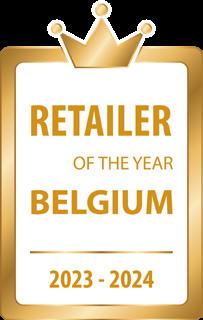
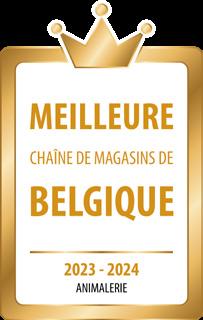


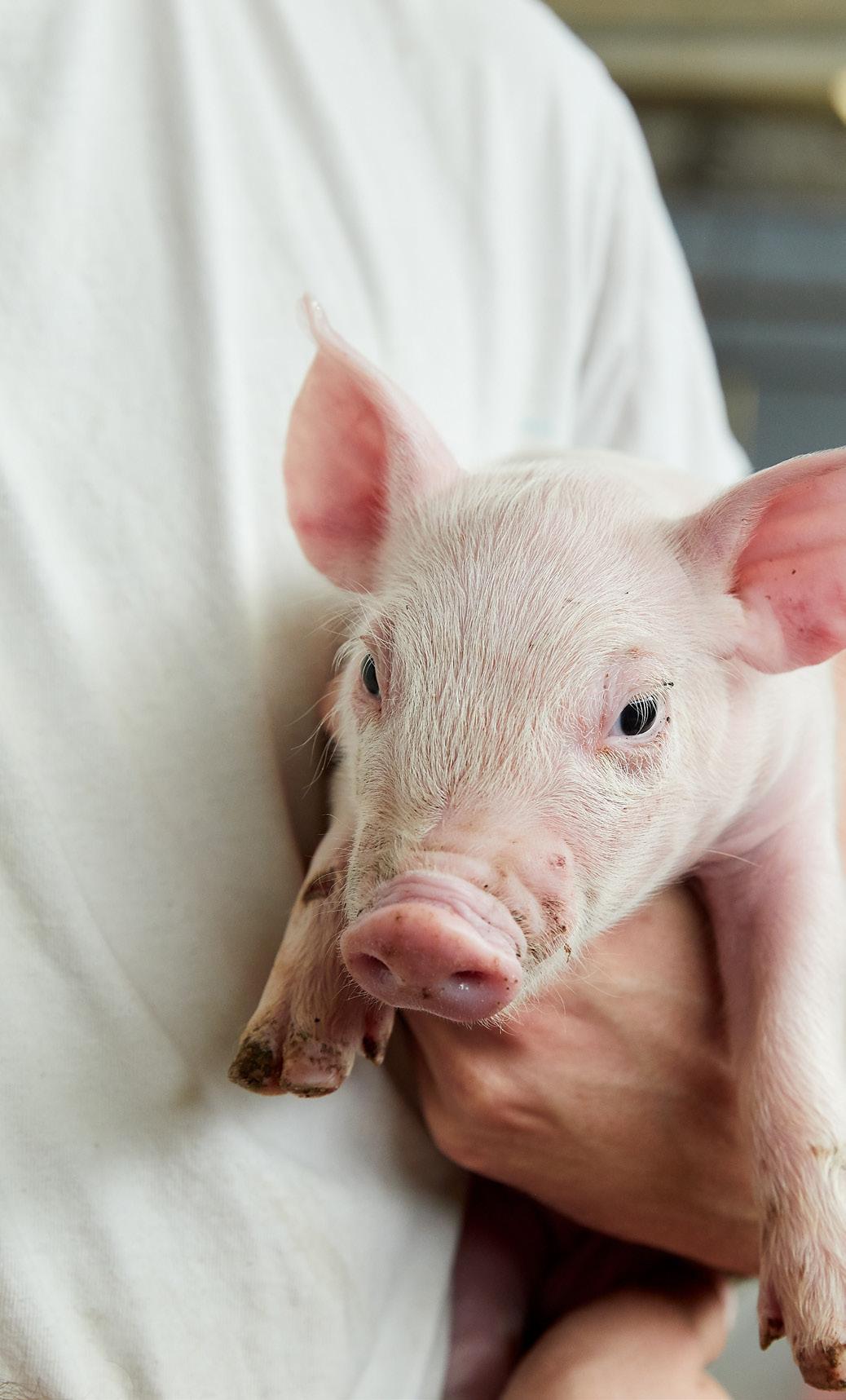
Step by step, but always moving forward
In a rapidly changing world, to stand still is to go backwards. By constantly spotting challenges, researching solutions, and making sure they are workable in practice, we continue to take steps forward. And everyone reaps the benefits.
Research, development, and innovation do not always have to be about robots and drones. Arvesta focuses on technological tours de force as well as low-threshold innovations that are sometimes hidden in a small but important corner. We do not innovate for innovation's sake; every development we do is based on a challenge that lives in practice and our solutions are only rolled out when we are sure we can provide the right support. This is how we make innovation at Arvesta possible for all our partners and customers. Quinten De Witte is Sustainability & Innovation Manager at Arvesta and has insight into the sustainable innovations that Arvesta markets and supports. "With the aim of ensuring economically and ecologically fair food production, I track down new opportunities to connect farmer, food industry, and consumer.
Innovation is an important part of that story. But always in such a way that it is workable and brings added value to each partner."
The challenges facing farmers and horticulturists today are enormous and include climate change, increasing pressure on crop protection products and fertilisers, unstable economic markets, and the need for local sources of protein. Arvesta is meeting these needs and we have recently rolled out some exciting innovations. Via fertigation, we help farmers give water and nutrients to their plants when
they need them. A win-win, as this not only helps keep crops healthy in dry periods, but also reduces water evaporation. Farmers who want to get started with task maps when sowing and harvesting their crops can count on the support of our Varicare experts, who know all about precision farming. But we also do our bit after the harvest, via Smartfogging to support the optimal and environmentally friendly storage of potatoes in the shed, for example. These innovations have been launched and we are now rolling them out further, bringing even more farmers on board by lowering the threshold for getting started with technology and innovation.
We go for workable innovations that bring added value to each partner.
Arvesta is also taking important steps in the search for alternatives to artificial fertilisers and chemical crop protection agents. For this, we are not only looking at circular fertilisers from residual flows from the food industry, but also at biostimulants, which naturally increase plant resistance and facilitate nutrient absorption. The increasingly extreme climate also requires plants that are more resistant to longer periods of drought or more resistant to certain fungal diseases. With our demo fields widely distributed, we test out new varieties and products, with a view to providing our customers with informed advice. We are also strong in greenhouse cultivation innovation. We lead the way in high-tech greenhouses and mobile gutter systems with a focus on plant health. Benfried, one of the strongest Arvesta brands, even won the HortiContact Innovation Award in 2023, thanks to the marketing of a parasitic wasp that fights Nezera bugs in the greenhouse.
Growing local protein is crucial if we want to become less dependent on imports from outside Europe. That is why at Arvesta we not only guide growers to add new varieties and crops such as peas to their cultivation plan, but also guarantee them a stable sales channel. Esther Monard, Business Development Manager for Agri & Horti says: "Our protein concentrates plant
in Mettet will start up in autumn 2024 and will play an important role in valorising and marketing locally grown proteins from peas. That's a big step forward!"
The Animal Nutrition Business Unit is also riding high when it comes to research and innovation. Dirk Bogaerts, Director of Nutritional Solutions: "From feeds with low CO2 emissions such as Euroclim, the Taintstop feed that prevents boar taint, to our feeds that are adapted to the Better Chicken Commitment: all are examples of extensive research that has been converted into solutions that work in practice." At the same time, across our wide range of feeds, we are constantly striving to create a composition that better meets the animal's needs, specific to the life stage it is in. We also keep the economic return of all the new solutions we develop in mind, because innovation has no value if it cannot be applied in practice. This is another example of going one step further to ensure that our sustainable innovations can offer farmers even higher financial returns.
That ecology, economy, and welfare can go hand-in-hand is also proven by Eminex, an innovative slurry improver from Arvesta. Animal manure is a valuable raw material
and soil improver, but its composition is not always optimal. Eminex balances the biological processes in slurry, making for a safer, more climate-friendly, and efficient product. Methane emissions from slurry storage are reduced by 90-100%, the risk of dangerous H2S gases is reduced, and the plant can better absorb nitrogen from the manure, resulting in higher yields. A strong example of innovation that adds value at all levels.
Also, for private individuals
Of course, our innovative solutions are not reserved for our professional customers. In our shops, too, we strive for products that are increasingly environmentally friendly and of even higher quality. Research and development are indispensable in this so that we only market products that can rely on a strong foundation. For several years, for instance, we have been looking for a good alternative to peat, the extraction of which is environmentally damaging, in our potting soil.
Now that we are on the right track with this, we will reduce peat step-by-step, without compromising the quality of our potting soil. We are doing the same for our chicken feed, where we can now also offer a soy-free feed. The result of experimenting, testing, and adjusting, because we are only satisfied when a product meets the highest quality standards.


 Esther Monard Business Development Manager Agri & Horti Quinten De Witte Sustainability & Innovation Manager
Esther Monard Business Development Manager Agri & Horti Quinten De Witte Sustainability & Innovation Manager
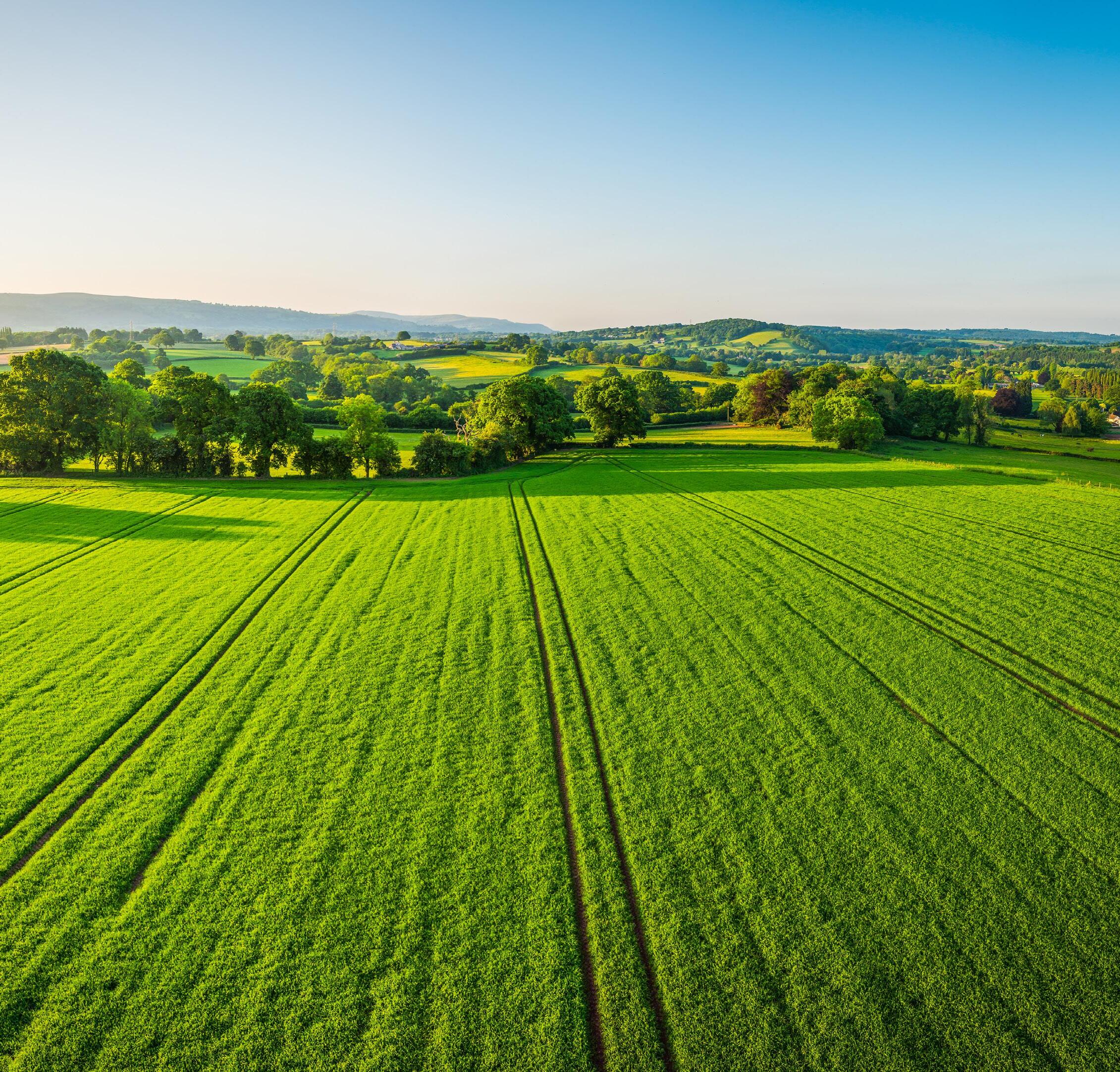
As a company, Arvesta falls within the scope of the Corporate Sustainability Reporting Directive (CSRD) and is preparing to report in 2026 on financial year 2025 (see page 35). Arvesta has accordingly adapted its sustainability framework - namely the ESG framework - to focus on the three key pillars within the CSRD.
The new sustainability framework (see opposite) explains how Arvesta's ‘From Field to Future’ mission complements our sustainability ambitions from the perspectives of Environment (E), Social (S) and Governance (G). In doing so, we continue to focus on our key stakeholders, namely farmers, horticulturists, the planet, our employees, and consumers.
Environmental impact (E)
Developing sustainable and innovative solutions
Caring for our people and customers
Governance (G)
Ensuring good business management
Our local experts with a passion for agriculture guarantee a long-term future for farmers and horticulturists with pragmatic and innovative solutions.
The result: better returns for our clients, satisfied shoppers in unique stores and healthy, sustainable food on the table.


Arvesta continuously contributes to more sustainable and more productive agriculture and horticulture through innovations and technologies, continuous advice for farmers and horticulturists, and by always developing products and concepts with a view to improving animal welfare and safety.

Arvesta pursues economic growth responsibly - for itself and for farmers and horticulturists - with engaged employees to help satisfy our consumers.

Arvesta is working with its customers and partners to make the food chain more sustainable from field to fork, by committing to a sustainable procurement policy for all its businesses and creating more transparency on the sustainability aspects of its value chain.

Arvesta is tackling climate change, both through our commitment to help achieve CO2 reductions and by reducing our direct impacts, e.g., ensuring that 20% of our company cars are hybrid or electric by 2024.

Arvesta innovates sustainably in its own operations, with optimal traceability for its products, decreasing CO2 emissions internally and externally, and ensuring that new buildings (from 2020 onwards) achieve a ‘good’ performance level on the BREEAM standard.

As an expert in the realisation of the agriculture of the future, Arvesta is the direct, day-today, partner of farmers and horticulturists, and in this regard, we are positioned as a constructive and accessible discussion partner for governments, the media, and civil society.
From financial year 2025, Arvesta will have to comply with the Corporate Sustainability Reporting Directive (CSRD). This is a new European directive that prescribes how organisations should report on non-financial information, i.e., environmental, social, and governance (ESG) information. The detailed requirements of the CSRD are laid down in the European Sustainability Reporting Standards (ESRS). In this way, Europe ensures that ESG information is easier to obtain and makes it easier to compare sustainability performance between companies.
capital expenditure (capex), and operating expenditure (opex) potentially contributes to European environmental objectives.
Arvesta is fully preparing to report according to the CSRD. Specifically, we have updated our 2022 double materiality assessment according to the principles prescribed by the ESRS. The process of this analysis is described below, and the material impacts, risks, and opportunities (IROs) are further explained in this document. We have set new sustainability targets for Arvesta, which account for the material IROs. These indicate how we can and want to make a difference for the agricultural sector.
At the same time, Arvesta will also report according to the obligations of the EU Taxonomy. This involves Arvesta indicating what proportion of Arvesta's turnover,

As a key part of our work to prepare for CSRD reporting, Arvesta conducted a double materiality assessment (DMA) in 2023 and early 2024, in line with CSRD guidelines.
The DMA helps determine which topics are considered material by assessing the impacts, risks, and opportunities (IROs) associated with them. Two perspectives are taken into account:
(i) Impact materiality, which assesses the impact Arvesta has on the environment and society in relation to a topic; and (ii) Financial materiality, which assesses the potential impact a topic may have in the future on Arvesta's financial success.
The union of these two perspectives results in double materiality.
A total of 157 IROs were identified based on insights from desk research and stakeholder consultations. Each IRO was successively assessed against the evaluation criteria imposed by the CSRD, resulting in 66 IROs that were considered material. In total, the double materiality process resulted in 16 material topics that are material to Arvesta, either from the perspective of impact materiality, financial materiality, or both.
The result is visualised to the right (the topic in the white quadrant is not material). In doing so, each topic within the figure below is represented according to the maximum score for impacts (Y-axis) and risks and opportunities (X-axis).
The scope of the double materiality assessment is delineated at group level of Arvesta B.V. (hereafter Arvesta). An overview of all legal entities included in Arvesta's CSRD scope can be found on pages 94-95.
In line with CSRD guidelines, Arvesta's entire value chain was considered during the assessment. By working with external stakeholders, such as suppliers and customers, a thorough assessment of upstream and downstream impacts, risks, and opportunities was carried out.
The perspective of multiple internal and external stakeholders is needed to get a complete overview of IROs, including IROs applicable to the value chain.
A stakeholder assessment was carried out, identifying potentially relevant stakeholders, grouped into stakeholder categories. An overview of the different stakeholder categories is visualised to the right.
For each ESG topic, impacts, risks, and opportunities (IROs) were identified by analysing internal and external documentation, organising a workshop with key internal stakeholders, and conducting interviews with key external stakeholders. By involving both internal and external stakeholders, we were able to obtain a complete overview of IROs, including IROs applicable to the value chain. We ensured that different stakeholder categories were involved in the process. The following is an overview of the ESG topics linked to the ESRS standards.
To carry out the evaluation of IROs, an evaluation framework considering ESRS requirements was prepared and materiality thresholds were determined. Each individual IRO was then evaluated in accordance with this evaluation framework to determine which IROs were considered material. The identification and assessment of IROs involved internal experts and included information obtained through interviews with external parties. The results were then validated by the Arvesta Executive Committee.

In 2021, we released our first Activity Report. Back then, we communicated 10 ambitious priorities. To monitor our sustainability priorities even more efficiently, we developed the Arvesta Sustainability Dashboards. The overview below shows our progress in 2023 compared to previous years and our target.
For each priority, the Key Performance Indicator and the evolution are indicated relative to the priority.

Share of soy from non-deforested areas in total mass of conventional soybean meal purchased, in %:
Annual water savings in billion litres among farmers and horticulturists, through innovative developments by Arvesta (Hortiplan only):
Evolution of methane emission reduction by cattle customers using the Euroclim product:
Scope 1 (direct emissions) and scope 2 (indirect emissions) in % (adjusted):
By 2023, we made consistent progress towards achieving our goal of using 100% sustainable soy. We are on track to meet our target.
Thanks to additional mandates, we will save even more water and can confidently raise the target to 9 billion litres of water instead of 8 billion litres by 2025.
The livestock farmer’s switch to methane-reducing feed is slower than expected, despite the existing Flemish subsidy and a number of commercial actions from Arvesta. It is crucial that all links in the chain cooperate on this, including retailers, which is not yet the case. Arvesta continues to move faster in this area than the sector, which wants 10% of livestock farmers to convert by 2024.
entire carbon footprint with the 3 emission scopes was fully mapped for the years 2021 to 2023. Based on these insights, a reduction target was drawn up. From 2021 to 2022, a CO2e reduction of 81,152 tonnes CO2e (3.16%) was achieved. From 2022 to 2023, this reduction amounted to some 157,270 tonnes CO2e (6.31%). For more information, see also pages 52-54.
In 2023, 99.7% of our total feed supply for pig farming was antibiotic-free. This brings us very close to our goal of being completely antibiotic-free by 2027. Sector federation BFA has tightened its target to stop medicated feeds (antibiotics) by 2030 and will stop as early as 2027. Arvesta, which had initially set its target for 2028, has now also brought it forward to 2027.
Annual reduction of CO2e
5. 100% antibiotic-free feed by 2027
(direct emissions)
scope 2 (indirect emisin % (adjusted):
Share of total mass of feed for piglets, fattening pigs, and sows that does not contain antibiotics, in %:
6. >50% of raw materials transported by water
7. 20% of commercial vehicles to be hybrid or electric
Share of total mass of materials imported by barge to BU Animal Nutrition and Agri & Horti sites:
8. Towards 0 accidents
9. Fit@Arvesta participation
entire carbon with the 3 scopes was fully for the years 2021
Based on these a reduction target drawn up. From 2021
CO2e reduction of tonnes CO2e (3.16%) achieved. From 2022 this reduction amounted to some 157,270 CO2e (6.31%). information, pages 52-54.
In 2023, 99.7% of our total feed supply for pig farming was antibiotic-free. This brings us very close to our goal of being completely antibiotic-free by 2027. Sector federation BFA has tightened its target to stop medicated feeds (antibiotics) by 2030 and will stop as early as 2027. Arvesta, which had initially set its target for 2028, has now also brought it forward to 2027.
Arvesta remains consistently committed to waterborne transport. By 2023, we were already above the target of at least 50%.
Share of hybrid or electric commercial vehicles in Arvesta's fleet (incl. cars on order), excluding temporary cars for new entrants:
Number of occupational accidents with absence from work per year of Arvesta's permanent staff and job students:
Percentage of permanent employees, job students, and contractors who registered on Fit@Arvesta:
10. Consumer packaging of bread and baking mixes with recyclable monoplastic film
Share of mixes produced by Arvesta with recyclable packaging:
In 2023, electric cars were delivered more smoothly, allowing us to catch up. From now on, we are also taking into account the number of cars ordered. This means that today we are on track to achieve the 20% target.
Safety at work is an absolute priority for Arvesta. We are quietly making progress in reducing the number of accidents, but every accident is one too many. We therefore continue to take plenty of action.
More and more employees are joining the Fit@Arvesta platform. Thanks to even more sporting events, the platform registered a notable 13% increase in participation. We mostly achieved this target, except for a few packages for which we chose not to simply throw away the old packaging but to use it up first. By avoiding unnecessary waste before switching to recyclable packaging, these are then also immediately packaged more sustainably.
The double materiality analysis teaches us what Arvesta's main impacts, risks, and opportunities are.
The new ESG priorities for Arvesta, which we are maximising from now on, focus on strengthening our positive impacts, mitigating negative impacts, and managing risks and opportunities. These updated priorities build on the objectives we communicated in 2021, but now we are going one step further. Together with our partners, we are committed to the sustainable and innovative agriculture of the future.
# Our 20 ESG priorities
1 33% reduction in scope 1, 2, and 3 emissions by 2030 (compared to base year 2023 and in line with the Science Based Targets initiative for a 1.5°C future)
2 Global annual water savings of 14 billion litres by 2030, resulting from Arvesta's innovative solutions.
3 100% controlled sourcing of high-risk raw materials that are free from deforestation by 2026.
4 Application of carbon farming measures to 200,000 hectares of land by 2030.
5 50,000 hectares of crops treated with lower environmental impact solutions (crop protection & plant nutrition) by 2030.
6 30% of fertilisers are low-impact ecological alternatives by 2030.
7 20% of arable farmers (clients of Arvesta) are supported by smart agricultural technology by 2030.
8 30% of arable farmers (clients of Arvesta) are supported with advice on soil management by 2030.
9 Strive to ensure that 37% of raw materials for animal feed are by-products or waste products from human consumption.
10 Arvesta's product packaging is designed with recyclability in mind: 55% target for plastic and 85% target for paper/cardboard by 2030.
11 Peat-free potting soil is sold in bags to Aveve consumers: 20% peat reduction in Aveve potting soil by 2025 and 100% reduction by 2030.
12 100% of suppliers (of strategic product categories) are signatories to Arvesta's charter for a sustainable supply chain by 2030.
13 Aiming for 0 accidents.
14 Maintain or exceed an 80% employee satisfaction score by 2030.
15 Fair margins for farmers on products sold: Arvesta aims to sell 100,000 hectares of crops through cultivation contracts, ensuring additional income for farmers by 2030.
16 Arvesta will have 8 local pilot projects on sustainable and innovative food production systems.
17 25% sustainably produced flour in Aveve baking mixes by 2025 and 50% by 2030.
18 Aiming for 0 data breaches.
19 For Retail: maintain or exceed the high standard of 65% Net Promoter Score by 2030. For Animal Nutrition & Agri Horti: achieve or exceed the benchmark score for the sector.
20 100% antibiotic-free feed by 2027.
Caring for the planet (and everything and everyone that lives on it) is increasingly integrated into our operations and solutions. By developing a framework that captures Arvesta’s environmental, social, and management efforts, we not only ensure specific steps forward. We also better meet the expectations of our stakeholders and align with stricter regulatory frameworks and standards.
• Defining the different roles and responsibilities within Arvesta.
• Central and decentralised organisation of ESG activities.
In 2023, Arvesta developed a business model for efficient management of all our material ESG topics. In that framework, we set out how we will work on our ESG efforts, what targets we want to achieve, and how we will report on our progress and work points. The framework is based on six essential building blocks.
• Applications and infrastructure that are required to enable ESG reporting.
• Efficient support for data collection and validation through technology.
• Determine and localise the necessary competences within the organisation and beyond.
• Refining the appropriate steering and decisionmaking bodies.
• Setting control mechanisms.
• Setting up the right processes to manage ESG topics.
• Designating process owners and defining process frequency.
• Determining the roles and responsibilities of the various stakeholders.
• Encourage and support stakeholders to also take on an ESG role.
To start with, we define the different roles and responsibilities within Arvesta. Arvesta wants sustainability in all its aspects to be embedded at every level. This involves both the central and decentralised organisation of ESG activities. After all, we can only get started when the organisational structure is clear and employees know where their responsibilities lie.
In putting together ESG governance, we formed and refined the appropriate steering and decision-making bodies within the existing organisational structure. This also includes establishing control mechanisms.
Efforts are made by every employee, but it is important that managers create a clear framework in which choices are made and results do not go unnoticed. That’s why proper governance is an indispensable element.
Next, we set up the right processes to manage ESG topics, including identifying process owners and determining process frequency.
After that, it is time to define the roles and responsibilities of all stakeholders. We encourage them to take up their role in the ESG story and support them with the right tools and information.

It’s also critical to determine and locate the competences needed to bring this exercise to a successful conclusion. We look for these profiles primarily within Arvesta, but we also appeal to external experts to guide us with certain specific types of expertise.
Data is the new gold and this is certainly true when it comes to sustainability efforts. We have mapped out the applications and infrastructure needed to enable monitoring and reporting on ESG priorities. Technology plays an important role in efficiently collecting and validating all our data.
A clean-living environment is the basis for healthy plants, animals, and people. As a full-service partner of farmers and horticulturists, at Arvesta we value the natural world enormously and make continuous efforts to have a positive impact on the environment.
Our farmers are feeling the effects of climate change every day and we see it as Arvesta's duty to play our part in responsible climate action. Not only do we want to reduce our emissions and green our energy consumption, but we also seek to increase the resilience of our organisation - and the broader value chain in which we work - to the effects of climate change.
The earth is a breeding ground teeming with life, or at least it should be. At Arvesta we are doing our part to contribute to a healthier planet by working towards more biodiversity, higher air quality, smart water management, and valorising residual flows.
But we also look beyond our own organisation and set a high environmental bar for the partners we work with.
you go further!
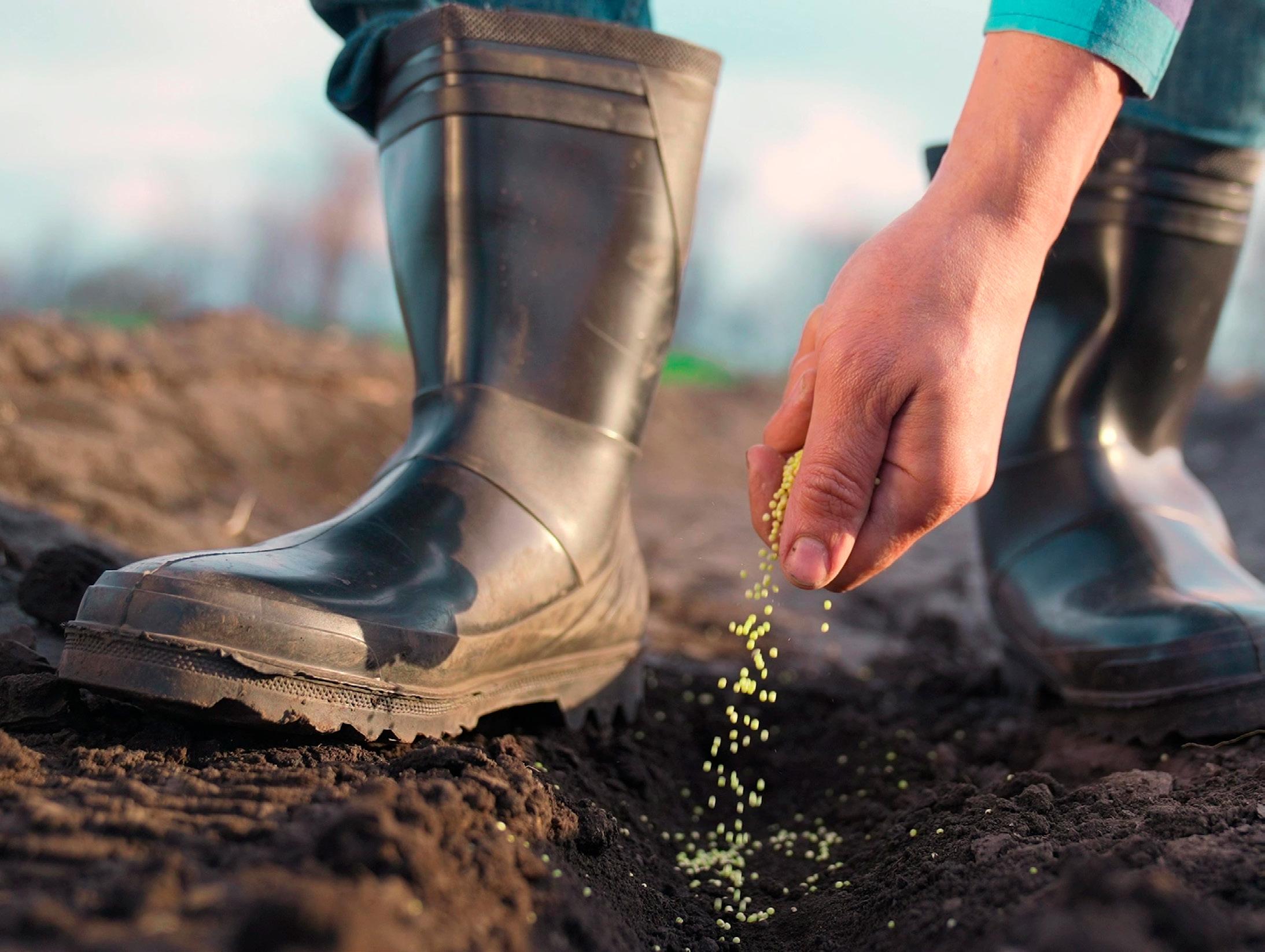

Working on sustainable and innovative solutions
# Our environmental priorities
1 33% reduction in scope 1, 2, and 3 emissions by 2030 (compared to base year 2023 and in line with the Science Based Targets initiative for a 1.5°C future)
2 Global annual water savings of 14 billion litres by 2030, resulting from Arvesta's innovative solutions.
3 100% controlled sourcing of high-risk raw materials that are free from deforestation by 2026.
4 Application of carbon farming measures to 200,000 hectares of land by 2030.
5 50,000 hectares of crops treated with lower environmental impact solutions (crop protection & plant nutrition) by 2030.
6 30% of fertilisers are low-impact ecological alternatives by 2030.
7 20% of arable farmers (clients of Arvesta) are supported by smart agricultural technology by 2030.
8 30% of arable farmers (clients of Arvesta) are supported with advice on soil management by 2030.
9 Strive to ensure that 37% of raw materials for animal feed are by-products or waste products from human consumption.
10 Arvesta's product packaging is designed with recyclability in mind: 55% target for plastic and 85% target for paper/cardboard by 2030.
11 Peat-free potting soil is sold in bags to Aveve consumers: 20% peat reduction in Aveve potting soil by 2025 and 100% reduction by 2030.
12 100% of suppliers (of strategic product categories) are signatories to Arvesta's charter for a sustainable supply chain by 2030.
17 25% sustainably produced flour in Aveve baking mixes by 2025 and 50% by 2030.
How we adapt to current and future climate change and its impacts.

With farmers as both supplier and customer, climate change is a challenge not to be underestimated
As the full-service partner of farmers and horticulturists, Arvesta is at the centre of the value chain. Climate change has an impact not only on the supply of our raw materials, but also on the sale of our products and services. We are acutely aware of this risk and responding to it as best we can.
Although the effects are greater in some regions than others, climate change is a fact of life all over the world. The first to feel its impact are farmers, because food production is now heavily dependent on sun, rain, wind,
and heat. Arvesta is strongly committed to combatting this climate change, but we must also adapt to the effects that are already a reality today and the potential risks they pose.
Thorough risk analysis
To properly identify those risks, Arvesta works with an external partner. "We don't take this lightly," says Caroline Wené, Director Internal Control & Risk Management at Arvesta. "In workshops with employees from different departments of the company, we determine all the challenges Arvesta faces. Climate change is definitely part of that.”
We work with local suppliers as much as possible.
Our material impacts, risks, and opportunities (2)
Opportunities:
• Demand for drought-resistant crops in water-stressed regions.
• Carbon farming practice and soil management.
From there, an in-depth analysis will follow and specific actions will be worked out to minimise those risks. Caroline indicates that this is not a one-off exercise, but one that will be repeated regularly under the guidance of her team: "Properly mapping out who our suppliers and our customers are, where they are, and how dependent we are on them is the basis for learning from this."
If farmers are feeling the impact of climate change, so is Arvesta. The raw materials for many of our products come from agriculture. Extreme weather conditions can therefore compromise that supply. "We are well aware of this risk and monitor weather conditions in the regions from which we source products very closely. This way, we are quickly informed when a problem threatens to form and can look for alternatives, if necessary," says Cedric Pierreux, Internal Control Manager at Arvesta. But the proportion of products that come from distant countries is fortunately limited. "We work with Belgian
or European suppliers as much as possible to save on transport costs and emissions, but most importantly because our local suppliers can deliver the best quality."
Arvesta is also feeling the impact of climate change on the sales side. The demand for plant varieties that can cope with drought or heat stress is increasing, gardeners are postponing purchases during long periods of rain, and farmers are looking for solutions. Climate change clearly offers both challenges and opportunities, and Arvesta is grasping them with both hands.

 Caroline Wené Director Internal Control & Risk Management
Caroline Wené Director Internal Control & Risk Management
 Cedric Pierreux Internal Control Manager
Cedric Pierreux Internal Control Manager
By reducing greenhouse gas emissions, we want to help keep the temperature rise to well below 2°C (compared to the pre-industrial period) and even aim to limit it to 1.5°C as stipulated in the Paris Agreement. Saving energy and switching to renewable sources are also part of this objective.
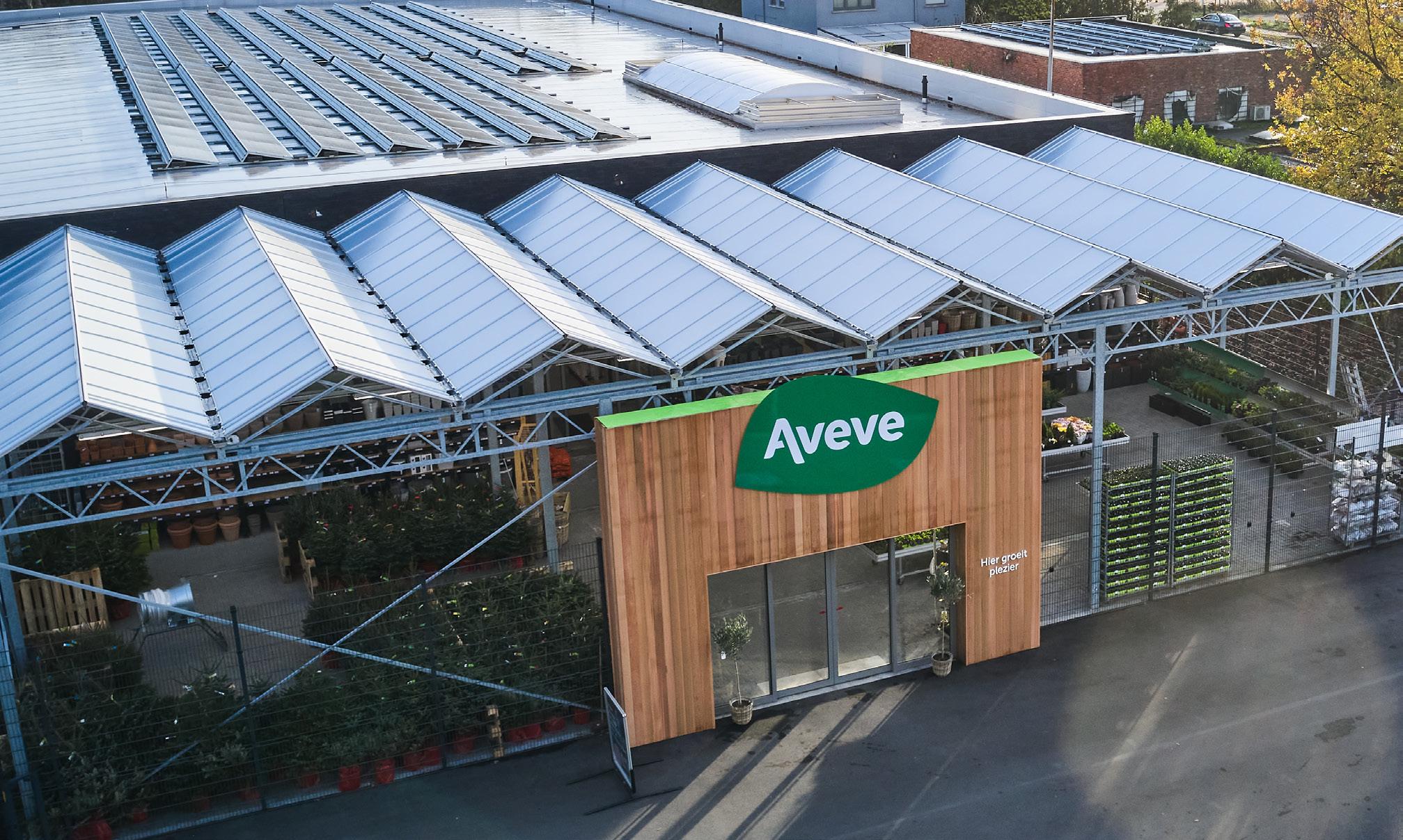
We put our energy into climate solutions
Climate change is a global problem, but we can do our bit locally to mitigate it. As a full-service partner of farmers and growers, at Arvesta we can be part of the solution at every stage, from field to fork.
Over the past 40 years, the Earth's temperature has risen by about 1.1°C. That may not seem like much, but it is a definite problem. Global warming is making the climate increasingly extreme and farmers are the first to feel the effects: getting good yields is becoming increasingly challenging. The cause is greenhouse gas emissions such as nitrous oxide, methane, and CO2. The first two, among others, come from biological processes in manure or the digestion of cows, while CO2 is mainly due to combustion processes in engines. Arvesta is first and foremost committed to reducing its own CO2 emissions by focusing on saving and greening energy, among other things. We also want to help farmers reduce their carbon footprints.
Firstly, we look at what we can do to limit CO2 emissions within the operation of Arvesta itself. Since our energy consumption is an important consideration, we fully analysed and mapped this in 2023. Jasmine
Dehamers is our Procurement Category Manager for Energy, a position created in early 2024. Jasmine was tasked with fully mapping Arvesta's energy consumption and current share of green energy, to see where progress could still be made. "So far, for example, more than 30,000 solar panels have been installed across 30 company sites, accounting for 4,000 MWh of green electricity per year." That investment in solar panels equates to a CO2 reduction of almost 2,000 tonnes. The research Jasmine conducted showed that we currently produce 4% of our energy locally. That is a start, but there is still a lot of room for improvement.
Taking advantage of all opportunities
Aveve shops are gradually switching to LED lighting. The outdoor areas have already been fully addressed and throughout the retail network, we aim to monitor and control gas and electricity consumption centrally. This means that lighting in all our shops is tuned to opening hours and the temperature is equalised. And our production sites are also part of the story. Among other things, investments were made in six devices for detecting leaks in compressed air pipes, allowing them to be repaired quickly and avoiding energy losses. Meanwhile, our offices are also doing their bit. The new Arvesta
headquarters in Wilsele has improved energy efficiency thanks to smart techniques such as solar panels, a heat pump, and optimal insulation. Thanks to a poster with various tips on saving energy, we ensure that every Arvesta expert contributes to a lower carbon footprint. All initiatives taken by Arvesta for saving energy and greening our activities are also discussed at the Energy Ambassador meetings that take place regularly.
Besides energy consumption, transport and mobility are also a major source of CO2 emissions. At Arvesta, we aim to reduce these by focusing as much as possible on transporting our raw materials and products in a more efficient, environmentally friendly way - whether by water, road, or rail. The ratio between the use of ships and trucks is stable at 52.2% for BU Animal Nutrition. We focus on combining different transport types, e.g., by train to the ports and then by ship to our factories. When choosing our transport partners, we consider their commitment to new, more environmentally friendly transport techniques, such as trucks running on biodiesel. At Arvesta, we also improve the fill rate and thus the efficiency of the trucks we use every year. Compared to 2022, this increased by 2%; looking at 2021, our trucks are now 9% better filled. The centralisation of our agricultural feed range - which was moved from Merksem to Wilsele in 2023 - plays an important role in this, resulting in more efficient delivery to our shops.
When it comes to mobility for our people, we also want to do better. With our overall mobility plan, we ensure that our people spend less time on the road and also make sure that the kilometres they drive have as low an impact as possible. We do this through a flexible homeworking policy, combined with a pilot project on leased bicycles and electrification of our fleet. Our flex plan gave us a good insight into the salary elements that Arvesta can use to make employee mobility more sustainable. Today, employees in Belgium can only order electric company cars and we also launched a bicycle leasing project in 2023, which will be further rolled out in 2024. The number of charging stations available at our shops, production sites, and offices was increased by 79 in 2023, bringing the total to 110. But we do not forget that developing awareness also has an important role in this story and are working on initiatives to encourage a more proactive mindset around sustainable mobility.
Arvesta also strives for partnerships that have a positive impact on the climate. For example, we choose suppliers who comply with our Supplier Code of Conduct (SCC), which includes many measures to combat global warming.
Through our close partnerships with the sector, at Arvesta we know better than anyone that farmers and horticulturists hold the key to a more climate-friendly world. We therefore offer them specific tools to take steps in this direction, such as our new generation of climate-friendly plant nutrients, like BlueN and N-Leaf, as well as circular fertilisers, like Haspargit. This reduces the need to produce artificial fertilisers, which in turn reduces CO2 emissions.
Animal feeds can also contribute to the reduction of greenhouse gases. Euroclim
cattle feed reduces methane emissions in beef cattle by up to 30% and in dairy cattle by up to 9%. Moreover, it is produced with a low carbon footprint by using European raw materials that are 80% sourced from by-products, recognising that circularity and climate friendliness go hand-in-hand.

We mapped our energy consumption and share of green energy and took steps forward.
 Jasmine Dehamers Procurement Category Manager Energy
Jasmine Dehamers Procurement Category Manager Energy
Arvesta wants to help reduce greenhouse gases throughout the value chain. This means that we scrutinise not only our own activities, but also those of our partners and customers. Under the motto 'to measure is to know', we have already determined the greenhouse gas emissions related to our activities.
By understanding our emissions, it is easier to put clear action plans in place. Emissions were calculated according to the Greenhouse Gas protocol (GHG protocol), a standard that distinguishes three areas in which we can realise reductions.
• Scope 1: direct emissions, as a direct result of our activities (e.g., burning fossil fuels to heat buildings and by our vehicle fleet).
• -Scope 2: indirect emissions, resulting from the energy we need for our operations (electricity, steam, heat, cooling) and thus purchases.
• -Scope 3: indirect emissions, which occur outside Arvesta but can be linked to our organisation, such as emissions linked to purchased goods and services, transport and distribution carried out by suppliers, waste (processing), employee travel, use of goods sold, as well as scope 1 and scope 2 emissions within franchises.
Arvesta's inventory of CO2 emissions
In 2022, we started taking stock of Arvesta’s greenhouse gas emissions. This gave us a first insight into our scope 1 and scope 2 emissions, but many additional steps needed to be taken to get a picture of our scope 3 emissions as well.
In 2023, we not only focused on calculating our emissions for this reporting year but were also able to refine and complete the data for the previous years, 2021 and 2022, with the calculation of our scope 3 emissions.
For 2020, insufficient primary source data were available to make an accurate comparison with subsequent years. Our carbon footprint in 2023 amounted to some 2,333,476 tonnes of CO2 equivalents. Of this, more than 98% came from our scope 3 emissions across the value chain. Scope 1 and 2 together therefore account for less than 2% of the entire carbon footprint. In our methodology, more than 83% of the calculation was based on primary data sources.
Scope 1 & 2 - direct emissions and indirect emissions from energy use: Emissions from electricity under scope 2 are calculated in two ways according to the GHG Protocol:
Arvesta's Carbon Footprint 2023 In tonnes CO2e
2,333,476 tonnes CO2e
• Market-based = emissions are calculated using emission factors from contractual instruments
• Location-based (sites) = emissions are calculated using the average emission intensity of the grid.
As Arvesta has not entered into green energy contracts, emission factors from grey electricity have been used for the market-based calculation, which explains why our market-based emissions are also higher than our location-based emissions. This is because location-based emissions take into account the entire electricity mix used in each area, including the share of green electricity
to market-based method
generated via wind, solar, and water.
The calculated emissions for the years 2022 and 2021 were also re-examined and re-calculated with the most accurate data.
What has changed?
• Arvesta has since discontinued an activity that was included in scope 1. The emissions related to this activity were transferred to scope 3.
• Additional data were requested for the consumption of some combustion sources that were co-processed.
• For electricity, site- and market-based emissions were calculated using more correct emission factors.
Purchased
Purchased
With these adjustments, we now have an even clearer picture of our direct and indirect emissions from energy consumption.
Scope 3: Indirect emissions across our value chain
Scope 3 concerns indirect emissions across Arvesta's value chain and, as mentioned earlier, accounts for more than 98% of Arvesta's entire carbon footprint in 2023. The value chain of our products destined for agriculture play a large part in this, both upstream at suppliers and downstream on the farm. The largest category within scope 3 is the category of emissions from the production of purchased goods and services. This category covers 71%
Arvesta's Carbon Footprint
*according to market-based method
of the entire carbon footprint. Looking at this in more detail, we can see the importance of agricultural products. Purchased raw materials for preparing animal feed represent a large share of emissions within this category. Emissions from these raw materials come from the supply chain, such as growing the crops, the country of origin, and transport to our factories. The production of fertilisers and plant protection products also plays an important role. This is because the production of these products is very energy intensive.
The second largest category within Arvesta's scope 3 is the category of emissions from the use of products sold. Here, methane emissions
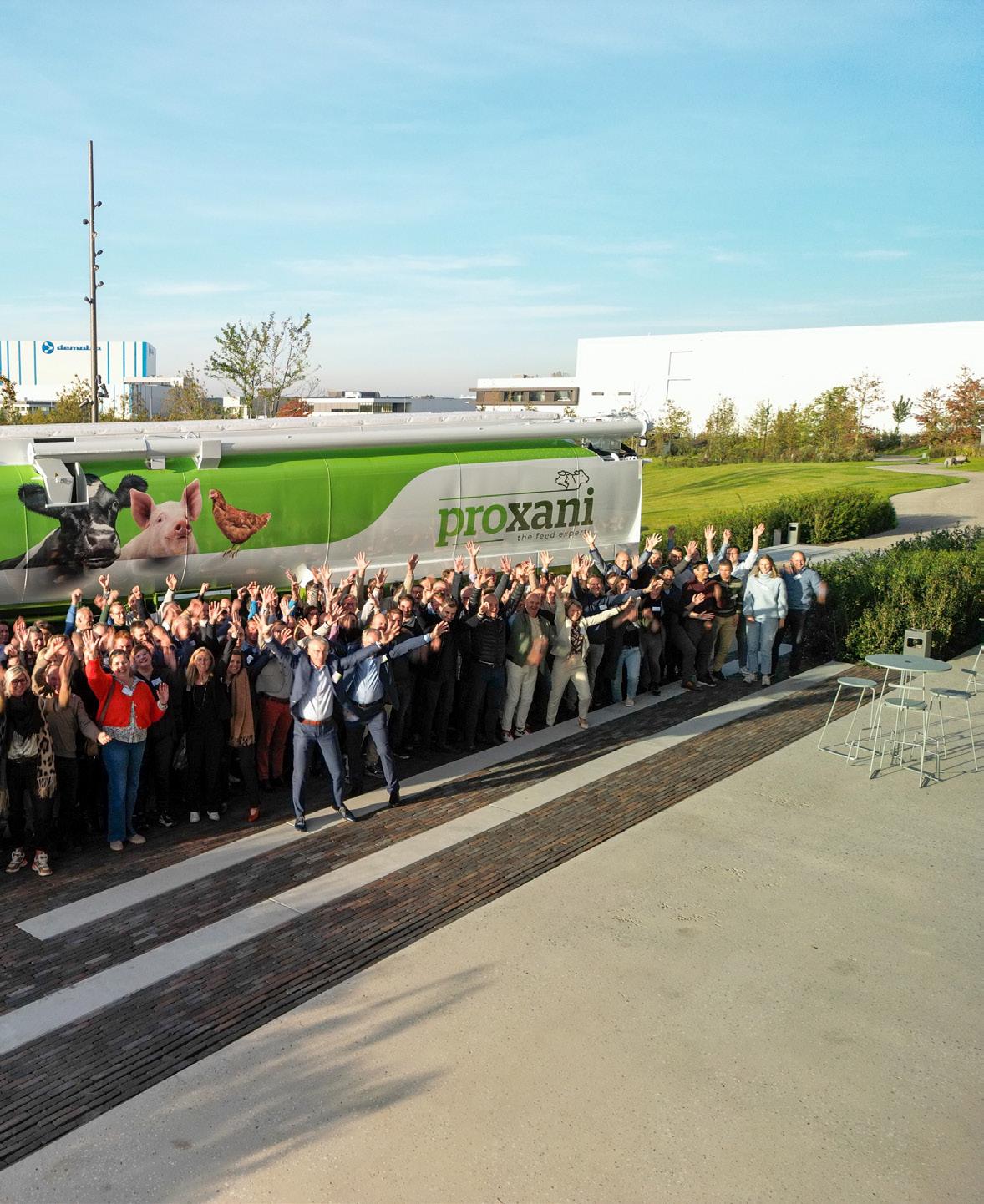
from animals digesting our sold feed play a major role, as do nitrogen emissions from fertiliser use. The other categories represent less of 5% of the entire carbon footprint.
Now that we have insight into the entire emissions of our activities according to the three scopes, we have gained the ability to set a reduction target and draw up action plans to achieve this target.
To arrive at this reduction target, we based ourselves on the reduction target standards of the Science Based Targets initiative
(SBTi). Since Arvesta operates within the agricultural sector, we have also obliged ourselves to follow the established Food, Land, and Agriculture segment (FLAG) target standards within SBTi. For these FLAG-related emissions, we set a reduction target of 31%. In addition, we set a 42% reduction target for all our non-FLAG-related emissions. Both targets are designed to be achieved by 2030 and are in line with the 1.5 degree pathways required for a science-based approach, as presented by SBTi.
Taking these targets together for our entire carbon footprint, we commit to an average annual reduction of 4.71% to reach a total emissions reduction of 33% by 2030 (using 2023 as the base year). We choose to use this overall target in our communications.

Our material impacts, risks, and opportunities (9)
Positive impacts
• Be a pioneer of the Carbon Farming approach and develop associated products, techniques, and services for the value chain and farmers.
• Development of methane-reducing feed, Euroclim.
• Further investment in the use of renewable energy (through solar panels and green power contracts).
Negative impacts
• Significant scope 1 and scope 2 emissions.
• Significant scope 3 emissions.
• Current and emerging energy and carbon-related regulations weighing on costs (e.g., carbon tax, CBAM, ETS).
• High energy costs and exposure to energy-related financial impacts, such as price volatility, supply interruption, regulatory changes for longterm PPAs, etc.
Opportunities
• Invest in energy-efficient process improvements.
• Market shift to less carbon-intensive products

To achieve this reduction target, we will draw up several action plans to work towards this as a whole organisation. For instance, one of our largest emission sources is the purchase of raw materials and we are currently already exploring various avenues to reduce emissions. These avenues will soon be made more specific and action plans will be linked to these. Several of our innovations are
already helping to reduce our emissions, such as the sale of our circular fertilisers and our methane-reducing, Euroclim feed. We will continue to put all our efforts into this, as we fully believe that these products not only add value for our farmers, but also for our climate.
We strive not to detract from the value of the environment or material properties and to treat natural resources, such as soil, with care.

The solution lies beneath our feet
More than ever, it is becoming clear that good soil quality can be an answer to many challenges. From avoiding erosion to combating global warming, the solution is largely under our feet. Through strong projects such as Varicare, fertigation, and the Carbon Farming Club, Arvesta is joining forces with farmers to make a real difference.
2023 was a year in which the increasingly extreme climate had a major impact on field operations and the yields of many crops. Farmers were the first to face it because producing food in dry, wet, or hot conditions is not easy. Like methane and nitrous oxide, CO2 contributes to the greenhouse effect and global warming. If we want to combat climate change, greenhouse gas emissions need to come down and one solution is that our agricultural soils have huge potential to store CO2. Farmers play a crucial role in that story and through the Carbon Farming Club, Arvesta is supporting them in both Belgium and France.
Farmers who join the Carbon Farming Club can have their farm's carbon footprint calculated in a very simple way and thus know exactly how much CO2 each activity emits. But that's not all. Our Arvesta experts also give them advice on how to reduce these emissions and how to make sure you store more CO2 in the soil. Farmers are then compensated for their extra efforts via a system of CO2 certificates. For this, Arvesta works together with Soil Capital, a Belgian company.
Esther Monard is the Business Development Manager Agri & Horti and works with her team to further roll out projects like the Carbon Farming Club, which has already been successful. "After launching in 2023, we have since grown to 40 participating farmers. That is still some way off our target of 500 farmers by 2025, but we are looking confidently to the future," Esther says. The Club already currently has some 8,000
hectares of farmland, so it has great potential to reduce emissions and increase CO2 storage. Initial figures for 2023 show that a lot is possible in a short time. For instance, 11 of the participating farms managed to grow climate-neutral crops, meaning they store more CO2 in the soil than they emit. 26 farmers can present an improvement in their results for their 2023 harvest compared to 2022. Together, they will have reduced and stored 4,200 tonnes of CO2, resulting in a value of EUR 117,000 in certificates. A welcome and necessary reward for their extra efforts.*


Disclaimer: results subject to certification, audit ongoing
Lowering the carbon footprint of farms is not obvious, but with the right advice, it is certainly possible. Using less fertiliser and switching to renewable energy sources as much as possible is already an important part of the solution. But farmers also play an important role in storing that CO2 in the soil. Ploughing less, using organic manure or compost and keeping more crop residues or green cover crops can already make a big difference. Not only for reducing the carbon footprint, but also for improving soil quality and biodiversity.
Working to improve carbon storage also brings other benefits. By working towards living soil with lots of structure and biodiversity, farmers also ensure that it becomes more resilient and resistant to drought and leaching from excessive rainfall. To respond even better to plant needs in increasingly extreme weather conditions, Arvesta also expanded its fertigation offering in 2023. This innovation allows growers to supply their plants with the right amount of water and nutrients via a system of drip hoses, exactly when needed. And through Varicare, we unburden farmers by working with precision agriculture. This makes location-specific seeding, planting, fertilising, and plant protection accessible to every grower, allowing them to save time and inputs. Better for both the wallet and the environment!
By 2024, we want to go from 40 to 120 farmers in the Carbon Farming Club, allowing the impact of reduction to be greatly expanded.
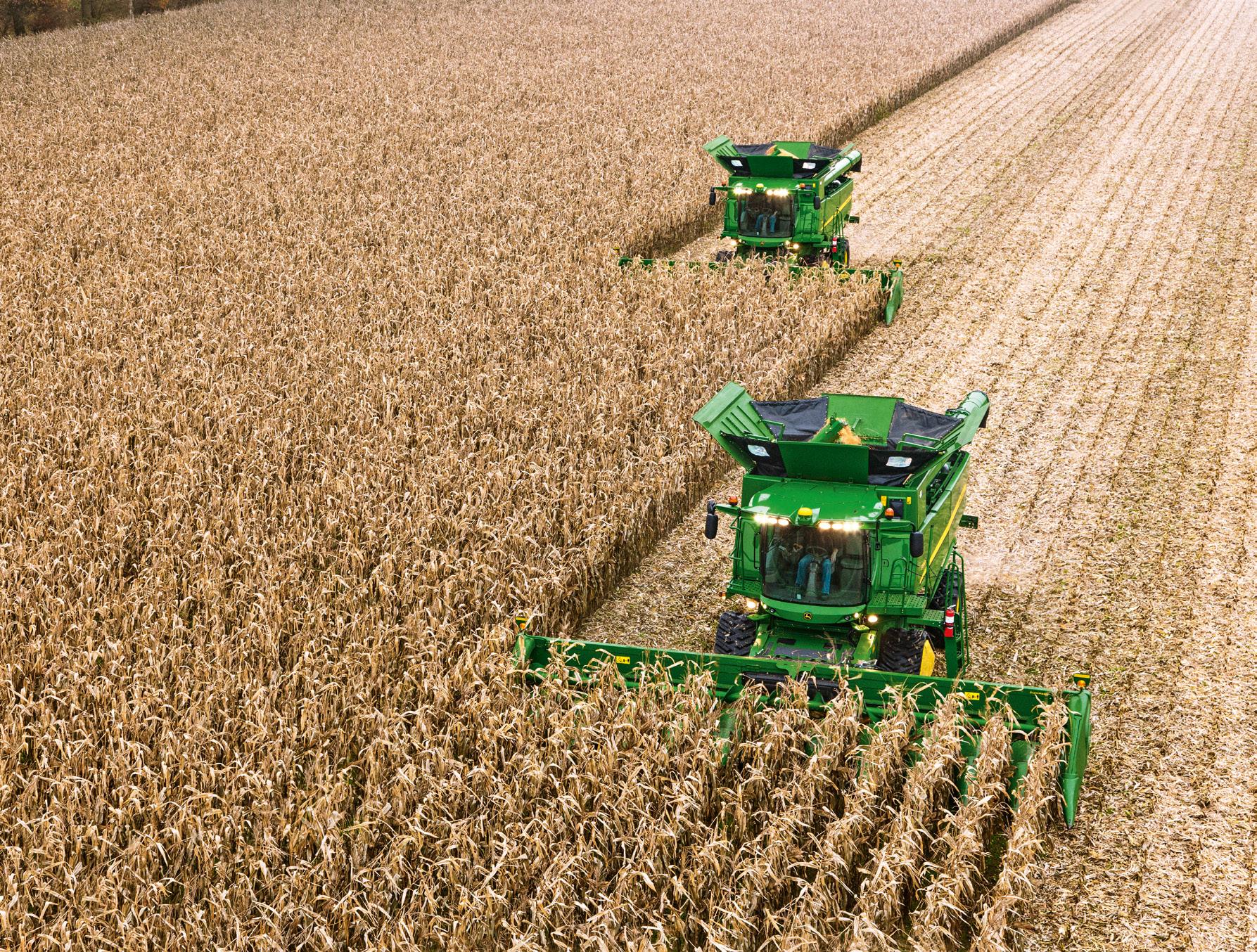

EstherMonard Business Development Manager Agri & Horti
Our material impacts, risks, and opportunities (7)
Positive impacts
• Providing smart farming solutions for variable application (e.g., Varicare, GPS technology, etc.) and technical solutions to reduce soil impact (e.g., variable tyre pressure systems).
• Cooperate with the value chain to maintain and improve soil fertility and quality, restore degraded farmland and store carbon in the soil (e.g., through actions eligible for the carbon farming service).
• Diminished negative impact on soil by providing low-impact alternatives to synthetic fertilisers and pesticides.
Negative impact
• Soil degradation and reduced soil fertility due to intensive agricultural practices.
Risk
• Reduced crop yields due to declining soil quality.
Opportunities
• Offering innovative alternatives (e.g., biostimulants) to fertilisers and pesticides.
• Giving farmers advice on soil quality.
We counter harmful effects on the environment, food sources, animals, plants, and people by handling potentially polluting substances consciously and carefully.

Optimal protection for people and the environment
Arvesta's production sites are an important link in the service we provide to farmers and horticulturists. By working with a strong environmental management system and extensive risk analyses, Arvesta ensures that the risk of negative effects on people and the environment is minimised.
in the dust emissions and the very limited possibility that a spill could result in leaching into the soil or a nearby watercourse."
The 14 production sites operating within the Animal Nutrition Business Unit are pivotal to the service Arvesta provides to livestock and hobby farmers. It is therefore crucial that the hazards they can potentially pose to the environment and the employees working there are kept to an absolute minimum. Gunter Van Parys is the Operations Director of these production sites and knows where the challenges lie: "In our case, the risks of environmental contamination lie mainly
To keep such hazards under control, Arvesta is committed to an environmental management system for each site. "This is preceded by a risk analysis drawn up specifically for each site, because the activities, infrastructure and environment are different for each site," says Gunter. Preventive actions are taken depending on the risks involved. Examples include dust measurements and filters, as well as the renewal or improvement of storage facilities. Arvesta also makes the safety of its employees a top priority. We not only provide training for new people, but also regularly train everyone who comes into contact with potentially risky products on the appropriate safety procedures and good
For each site, we draw up a specific risk analysis and environmental management system.
practices. Again, prevention is more than half the battle. Protective clothing should not only be on hand, but our people should also consistently wear it when needed.
Learning from mistakes
In risk prevention, it is also important to learn from past experiences. If there were any incidents in the past, they were dealt with quickly and thoroughly. But more important are the preventive measures taken to avoid such problems in the future. For instance, based on our risk analyses, we decided to invest in new storage infrastructure with contemporary technologies and safety measures.
Our material impacts, risks, and opportunities (3)
Positive impact
• Less water pollution through reduced risk of leaching with innovative products (Haspargit, microgranulates).
Negative impacts
• Excretion of methane and ammonia by ruminants and other livestock, with negative impacts on air quality.
• Water pollution from agriculture and animal husbandry.


We limit the use and discharge of water both within Arvesta and across the value chain.
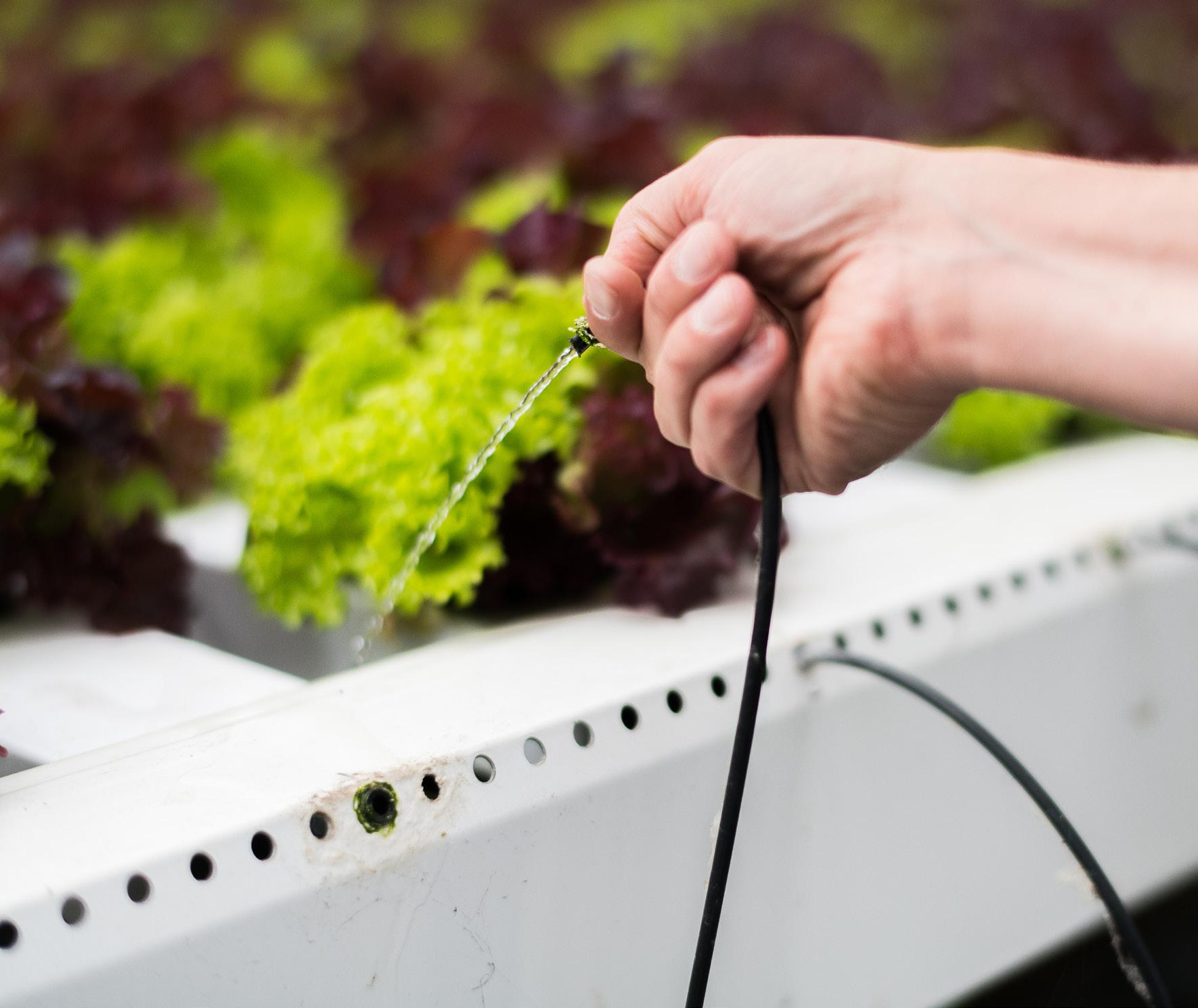
At Arvesta, we not only look at how much water we can save and re-use within our own internal operations, but also look for solutions that put farmers, horticulturists, and hobby gardeners on the path to more efficient water management. Cooperation between different links in the chain is very important here, and it is precisely in this area that we can play a major role.
Households, industry, agriculture, and nature all need water to live, work, and thrive. But climate change is also making society realise that more than ever we need to focus on smart water management to make the best use of that scarce water and re-use it wherever possible. At Arvesta, we are acutely aware of how precious water is and do all we can to use it as consciously as possible.
We are already setting a good example from the new Arvesta headquarters in Wilsele, where a total rainwater collection capacity of 40,000 litres has been provided. This allows
us to maximise the use of rainwater at this branch, where more than 100 employees work daily under a hybrid arrangement. We also make this effort for each of our Aveve shops. Each new shop is equipped with a 30,000 litre rainwater storage tank and we are doing the same with retrofits for our existing shops. So far, 22 of our 50 shops are equipped with these in-house rainwater tanks. Our Animal Nutrition and Agri & Horti Business Units also contribute, but little or no water is used in the production processes used in our plants.
We also aim to help the customer who enjoys spending time in their garden to be more water conscious. Aveve shops offer a wide range of tools that enable hobby gardeners to save a lot of water. From rainwater barrels to drip systems for vegetable gardens, it's all possible by working together, sharing knowledge, and using common sense.
Arvesta also provides key solutions for smarter water use in agriculture and horticulture. Our innovations ensure that water
Our material impacts, risks, and opportunities (3)
Positive impact
• Water savings by farmers and horticulturists, thanks to the innovative products sold by Arvesta (e.g., the automated mobile gully and greenhouse systems).
Negative impact
• Extensive water use for crop and livestock irrigation in water-scarce areas.
Opportunity
• Sales of products (including mobile gutter and greenhouse systems) that enable customers to reduce their water consumption.
saving can go hand-in-hand with efficient farm management in the barn, field, and greenhouse. For example, fertigation ensures that farmers can supply their crops with water and nutrients at the time the plant can absorb it. The system works through drip hoses and waters in the root zone, greatly reducing the risk of evaporation.
Water under glass
Greenhouse cultivation of vegetables, fruit, and ornamental plants has become a global feat of efficiency and innovation. Arvesta plays an important role in this through our Hortiplan and Van der Hoeven brands. Jessie-Lynn van Egmond is the Water & Sustainability Manager at Van der Hoeven and is very aware of the importance of water in the food chain: "70% of water consumption

worldwide is for food production, and yet very often water is not part of the food debate. That really needs to change," she says. Walking the talk, Van der Hoeven was not only one of the few companies in the agri-food chain to attend the United Nations Water Conference in New York in March 2023, but also participated in the Dubai Climate Conference in December 2023.
Thanks to the innovations and technologies used by Van der Hoeven and Hortiplan in their ecological greenhouse systems and mobile gutters, we can ensure that the use of water in greenhouse cultivation becomes virtually a closed system. "Technology and innovation are no longer limiting factors today, we can already do a huge amount," says Jessie-Lynn.
"The biggest potential for water saving and re-use lies in improving collaboration between different partners who can reinforce each other. So, in 2024, we not only want to further fine-tune our offering, but more importantly play our role in connecting various partners in the water landscape."
By working together, we can save even more water.
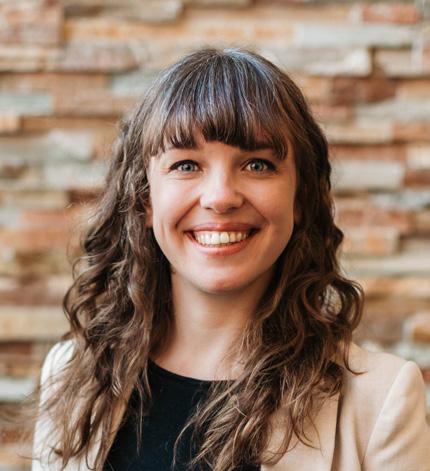
Jessie-Lynn van Egmond Water & Sustainability Manager
We encourage a wide variety of animals and plants everywhere on this planet.

Protecting and enhancing biodiversity is high on the European agenda.
Farmers have a lot of assets to contribute to this. By unburdening and supporting them, Arvesta is contributing to increased biodiversity.
Arvesta is committed to storing carbon in the soil, which compensates farmers for their efforts. "We also promote our mixtures of green cover plants, which keep fields vegetated between different main crops, provide natural enrichment of the soil, less leaching of valuable nutrients, less erosion and are also beneficial for biodiversity."
Arvesta wants to help farmers make extra efforts for the planet without sacrificing yield or productivity. Isabelle Huyghe is the Marketing Director for the Agri & Horti Business Unit. Together with her colleagues, she works on marketing sustainable solutions: "The challenges for the farmer are very big, but we can alleviate them."
By focusing on a wide range of biostimulants, biocontrol agents, and adjuvants that naturally improve plant growth and resistance, Arvesta aims to offer farmers an alternative to chemical crop protection products that are becoming increasingly scarce. "These innovative agents have the advantage of being kinder to plants and the environment. We see it as an important task to inform farmers about this and convince them to give it a chance within their existing treatment schedules," says Isabelle. The same goes for Carbon Farming, the project through which
But the importance of precision farming should not be underestimated either. With Varicare, Arvesta experts help farmers get started using task maps on their machines. "This allows you to sow, plant, fertilise, and apply crop protection according to your soil and crop. The farmer saves by using inputs more optimally and increases his yield per hectare. Varicare not only makes a difference ecologically, but also economically. The next step in this is that we can also share the data related to the inputs actually applied with other systems, so that we can ease the administration for the farmer."
In 2023, important steps were taken towards a more future-proof agricultural system but Arvesta wants to go even further towards regenerative agriculture. By this, we envisage a way of food production in which the
measures applied improve soil and water quality and increase biodiversity. In short, a way of agriculture that further increases its positive impact on the environment, making agriculture part of the solution! Of course, farmers must also be willing and able to go along with this. "That's precisely where Arvesta's strength lies,” says Isabelle. "Because we have strong partnerships from raw material to processing, we can guarantee farmers that certain products can be purchased by a processor that offers them a fair price for a fair product. That too is part of the peace of mind we give to our customers."
But improving biodiversity is not just the agricultural sector’s responsibility. Through our Aveve and Eurotuin shops, we help consumers make their gardens more attractive to various plants and animals. We do this by encouraging softening, focusing on locally grown plants, and making sure pollinators and other animals feel welcome.

Varicare helps farmers not only increase yields but also save on inputs.
Our material impacts, risks, and opportunities (9)
Positive impacts
• Replace chemically active substances with biological control agents and reduce the dosage of active substances in plant protection products.
• Maintain biodiversity in gardens by offering flowers, seeds, perennial meadow flowers, and flowering plants that attract butterflies and bees, as well as offering natural plant protection products.
Negative impacts
• The use of plant protection products on agricultural land has an impact on biodiversity because of their toxicological effects, which threaten ecosystem services such as pollination.
• Deforestation, habitat destruction and land-use change in the value chain due to conversion of natural ecosystems to agricultural land.
• Eutrophication due to high nitrogen and phosphorus loads from agricultural activities.
Risks
• Current and emerging regulations for sustainable agriculture (e.g., nitrogen regulation, EUDR).
• Legal ban on synthetic plant protection products.
• Reduce livestock in Flanders and neighbouring regions to manage the negative impact of nitrogen loads on valuable biodiversity areas.
Opportunity
• Biodiversity-oriented farming models (e.g., regenerative agriculture) and service models (e.g., smart farming).
Isabelle Huyghe Marketing Director Agri & HortiWe are committed to an economic system where products, materials, and other resources last as long as possible, environmental impacts are reduced, and waste is reduced or even avoided.
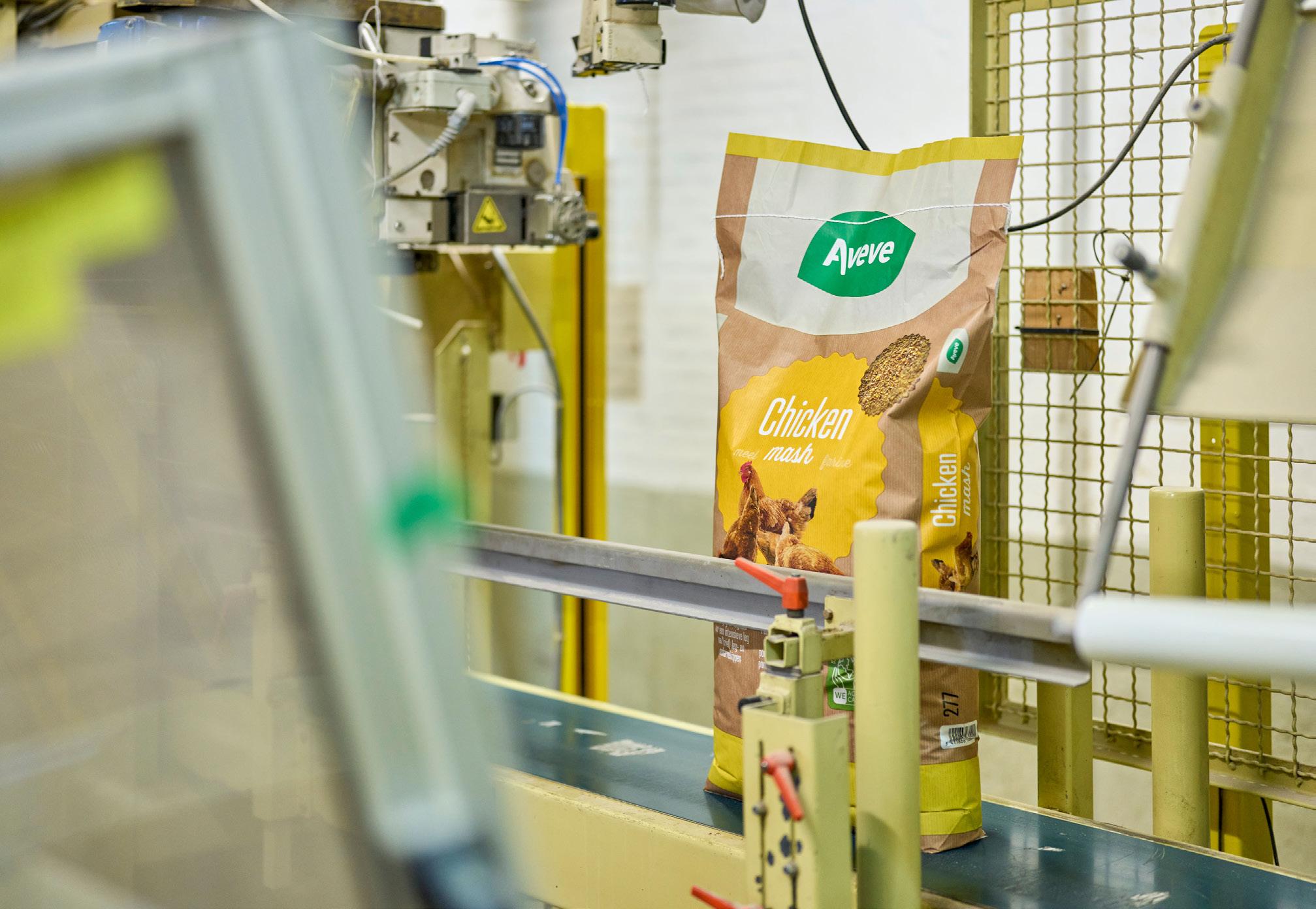
Maximum circularity, that's clean
Completely waste-free production is not possible for Arvesta today, but we do everything we can to work as circularly as possible. This ranges from valorising residual streams in our feeds to using recycled materials for our packaging.
The circular economy is a hot topic, and rightly so. Waste is a threat to our planet's water, soil, and biodiversity. European policymakers recognise this and are in the process of fine-tuning new regulations, such as the standard that all packaging must be recyclable by 2030. Arvesta did not wait for tightened standards and has been working for some time to take steps towards a system where waste is avoided and re-used as much as possible.
Just as circularity is part of the DNA of agriculture and horticulture, it is also contained in Arvesta's genes. For instance, we aim for 37% of raw materials for animal feed to consist of residual flows from the food industry, biofuel processing, oil processing, and flour mills by 2030. We also go full steam ahead to re-use residual products in plant nutrition production.
Arvesta puts a lot of products on the market and that means we also need packaging. Hilde Meelberghs works in the General Procurement department and is one of the driving forces behind the Arvesta Procurement Strategy for Packaging that was set up: "We want to anticipate tightening legislation and take our responsibility proactively. In this project, a cross-functional team with colleagues from various sites and departments works together to map out which packaging we have today, to what extent it puts pressure on the environment, and how we can reduce it. We are also in close consultation with our suppliers for this, as they are well placed to assist us in this."
By 2023, Arvesta could already ensure that all of Aveve, Niamh, and Soezie's flower packaging consists of 100% recyclable mono-plastic film. But that's not all. "We are also scrutinising all our other packaging to make sure it meets the predefined European standards. However, we aren’t doing this overnight, because more ecological packaging must not compromise the ease of use or the quality of the product and must be applicable in our
Circularity is in our DNA, from raw material to packaging.
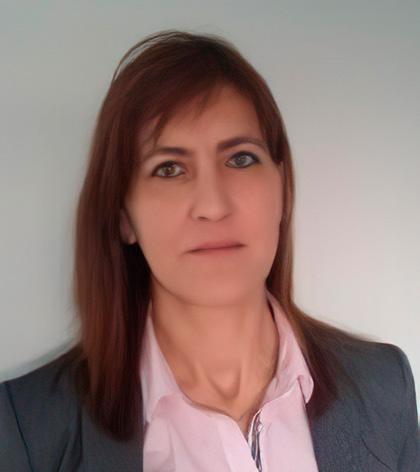 Hilde Meelberghs Procurement Category Manager
Hilde Meelberghs Procurement Category Manager

packaging lines." At Aveve's logistics centre in Wilsele, the switch to wrapping film with 30% recyclate (re-used material) has already been made. This is non-negligible, considering that we use just over 17 tonnes of wrapping film to ship our products every year. It is already a first step towards ensuring that this site meets European requirements by 2030.
Another of our strong examples of circularity is Van der Hoeven's Circular City Greenhouses. Water, energy, nutrients, and CO2 are extracted from urban waste streams or industrial residues, allowing plants to grow optimally and healthily in the greenhouse. It is an essential link to close the cycle as much as possible and grow food that has been fairly produced both ecologically and economically.
We also maximise the recycling of our own waste products. At a production site, if there is a spill of animal feed or seeds, this is efficiently cleaned up and collected - together with the residual streams from our production sites - for processing in the biogas industry, which generates electricity. A total of just over 2,900 tonnes of residuals were thus processed in biogas plants in 2023. Some of our sites also have balers in which waste plastic film or paper and cardboard are compressed, thus taking up less space when transported. Both paper and plastic are collected and re-enter the recycling circuit.
Our material impacts, risks, and opportunities (4)
Positive impact
• Valorisation of food industry waste streams (e.g., circular fertiliser Haspargit and sourcing by-products for animal feed)
Risks
• Customers increasingly demand transparency about the origin of (raw) materials.
• Current and emerging regulations for sustainable packaging.
• Pressure on margins due to higher costs for renewable raw materials.
At Arvesta, we aim for the highest quality not only in the products and advice we offer our customers, but also in our interactions with people. Whether employee, supplier, customer, chain partner or stakeholder - we treat everyone with equal respect.
As Arvesta, whenever we see an opportunity to improve the lives of people inside and/or outside our company, we seize it. We do this first and foremost by offering our employees healthy, honest work and paying attention to diversity, equity and inclusion. The high score Arvesta receives in terms of employee satisfaction shows that we are doing a good job.
But we also extend these efforts to employees in the wider value chain, as well as our customers and local communities. We make informed choices about who we partner with based on sustainability reporting and consider customer satisfaction as a high priority. This has proven to be a successful approach all around.
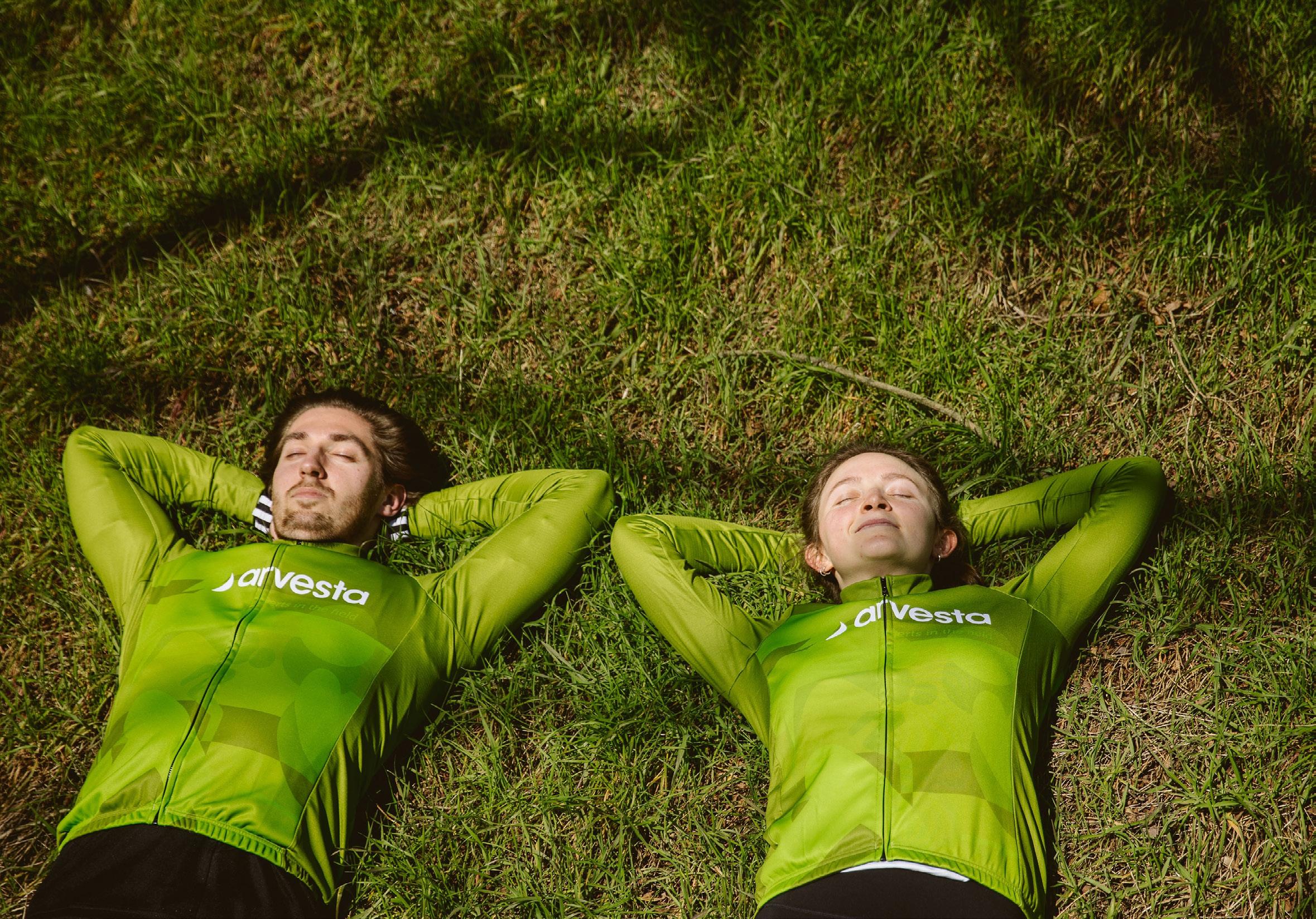

4 Application of carbon farming measures to 200,000 hectares of land by 2030.
7 20% of arable farmers (clients of Arvesta) are supported by smart agricultural technology by 2030.
8 30% of arable farmers (clients of Arvesta) are supported with advice on soil management by 2030.
12 100% of suppliers (of strategic product categories) are signatories to Arvesta's charter for a sustainable supply chain by 2030.
Our Experts in the field are Arvesta's greatest asset, so a human resources policy that values them is a competitive advantage. And investing in this approach bears fruit, because why join a war on talent when you can keep your in-house experts happy?
Arvesta strives for sustainable growth in the field and in the barn, but also when it comes to development opportunities for our Experts in the field. Karin Van Roy is Chief HR Officer and, together with her team, works to consistently create a positive organisational culture. Karin and her team succeed by recognising that building a culture in which people flourish really doesn't happen by itself, so they work on it every day.
Arvesta's strategy is based on the growth of our 2,300 employees. Because without the experience, knowledge, and motivation of our experts, we cannot develop our strong brands in a sustainable way. People for growth, growth for people. “If people are your main strength, you have to make sure they stay happy. You need a high-level HR
department for that," says Karin. "We really do something here at Arvesta that moves the HR world, and we should be proud of that. The four nominations we were able to achieve in the 2023 HR awards prove that."
But the most important validation obviously comes from within Arvesta itself. We choose to make maximum use of the talent we have in-house. "Being able to control your own growth path is very important for employee motivation. Whether that means you want to build up more experience in your current position or aim for a new position within the company, it's all possible," says Karin. Through various check-in interviews and an annual career consultation, a personal development plan is drawn up for each employee. As a function of this, you can participate in various training courses. "We make sure that our people can constantly learn, for example, through academies on a current topic, teams where young people can learn from the more experienced experts, and we also support our young graduates who come here to gain experience."
Investing in our people is of great importance to Arvesta. "Why join a war for talent when you can invest in your own people?" wonders Karin. "Our new CEO, Niek Depoorter, has worked for the company for 30 years and his promotion provides inspiration to a lot of colleagues. This is how we create opportunities to take new career steps internally; seeing that internal mobility at work is incredibly motivating."
Constantly working on what can be improved typifies not only the Arvesta experts, but also the HR team. To better support our experts in the field, a new 'SAP SuccessFactors' employee platform was rolled out in spring
2024. "We are going for a 360-degree approach with a focus on ownership by each expert. Our employees are now in the driving seat of their careers: they can make their own HR changes through the system and communicate their training needs. This also frees up time for the HR department to give more space to each employee, given the automation and additional reporting through the system, as well as the employee’s desired training courses."
Mentally and physically strong Arvesta is committed to mentally and physically strong employees. You can count on a listening ear when you need one. For example, there is the Employee Assistance Programme, which provides sessions for
We are doing something here at Arvesta that is moving the HR world.
Internal employee mobility is incredibly motivating for our people.
employees (and their families) whenever they need them. There is also our ‘Happy Thursday’ initiative, which offers a moment of relaxation and an opportunity to meet each other at the end of the working day. But there can be no healthy mind without a healthy body. With Fit@Arvesta, we set the bar for exercising as low as possible – recognising that developing a frequent exercise habit produces better long-term outcomes than encouraging sporadic intensity - and it works!
In 2023, Arvesta also made the move to a new headquarters in Leuven. Instead of opting for a new building, we renovated one of the company’s existing sites, with a lot of attention paid to ecology, flexible working, and a pleasant environment. "It has become a future-oriented head office with lots of light, air, and space. Moreover, we opted for roof and wall insulation, a heat pump, rainwater collection, and solar panels," says Karin. The
an electric vehicle fleet with charging stations complete the picture. "There are many small and large meeting rooms, flexible desks for sitting or standing, and an auditorium in the shape of a giant staircase. It's all aimed at providing our employees with the most pleasant working environment possible, adapted to our hybrid home-working policy of three days at home, two at the office."

KarinVan Roy Chief HR Officer

By reducing and preventing workplace accidents, promoting fair labour practices, and enabling social dialogue, we work to ensure safe, healthy, working conditions for our people and those we work with across the value chain.

At Arvesta, our experts are our strength. We work every day to create a professional environment in which they can develop to their full potential. And that is only possible when you feel good about yourself and risks on the shop floor are kept to an absolute minimum.
The basis for a positive working environment is obviously safety. Rudy Van de Perre is a HSE Manager (Health, Safety & Environment) and Prevention Advisor at Arvesta. Rudy and his team aim for zero accidents and as few risk situations as possible on the shop floor of the various Business Units.
Although accident prevention is also very important in Arvesta's office buildings, the biggest challenges lie in the production sites of BU Animal Nutrition and Agri & Horti. Here (agricultural) machinery is used, and processes take place that involve certain risks.
Rudy's job is to develop a health, safety, and environment (HSE) policy for Arvesta, in line with all legal provisions. He also monitors the extent to which targets in this area are met
and puts potentially risky situations on the radar so that they can be addressed. "To take safety to the next level, I work intensively with the different managers of each site and with the prevention advisers within Arvesta," says Rudy. "An important moment was the HSE Safety Day we held in June 2023 for the employees of BU Animal Nutrition. The aim of the campaign that we launched then is to work towards a positive safety culture, where engaged employees hold each other accountable for unsafe behaviour."
Towards a proactive security policy
Today, Arvesta's employees fall back on existing systems when an accident happens and that's good, but Rudy's team wants to go a step further. "Our ambition is not only zero workplace accidents, but also to create a proactive atmosphere around safety. Everyone should feel responsible for this and also intervene or adjust when a colleague is in danger of being in an unsafe situation." Alongside a conclusive safety and risk management plan, which has been in place for some time and is regularly updated, work also needs to be done to translate this into safe behaviour on the shop floor. A Gemba walk, i.e., a visit to the workplace you want to improve, is a good tool for this. "In 2023, we organised three such
walks at the Merksem production site. The idea is for managers to visit the workplace to see with their own eyes how work is done and where safety pain points might lie. These are then discussed with the employees concerned and adjusted if necessary."
Efforts are also being made to train and educate staff, as well as update and communicate safety regulations. In 2023, a working group was set up to focus on the risks surrounding hazardous substances and how to contain them. First aid tips were also re-instated in a clear and visual way and will be visually highlighted on all sites in 2024.
To relieve employees of as many worries as possible when it comes to safety clothing, it was decided in 2023 to start working with one catalogue of safety equipment across all sites, choosing products of the highest standards. "For example, we will only offer mouth masks with the highest degree of protection, so that people cannot make a mistake and accidentally choose one that is not adapted to the work they are doing," Rudy explains. "Although of course we also keep comfort in mind. You can offer the safest gloves, if they are not convenient to work with, people will not use them."
Our material impacts, risks, and opportunities (2)
Of course, health is not just about accident prevention. Through initiatives such as Fit@Arvesta, Arvesta offers employees the chance to further develop themselves athletically. When it comes to mental health, feeling supported by colleagues and managers is very important. Besides a good personnel policy and a positive corporate culture, social dialogue also plays an important role. Arvesta and the employees who engage in the unions have a mutually respectful relationship, through which valuable insights are shared.
At Arvesta, we also look beyond our own employees. Through the commitments we demand from our preferred suppliers, we raise the bar for fair and healthy work among the partners we work with. We carry this through when we evaluate ourselves, such as in our score for shop floor safety. For instance, we not only count our own employees’ accidents in the figures, but also those of outsiders when they carry out an assignment with us.
• Promote fair labour practices by respecting workers' freedom of association, collective bargaining rights, and participating in proactive discussions with workers.
• Work-related accidents.

Everyone should feel responsible for safety.
 Rudy Van de Perre HSE Manager
Rudy Van de Perre HSE Manager
We are committed to satisfied employees by investing in a balanced, motivating, and safe working environment.

91% satisfied employees, but we want to do even better!
Our fine score in terms of employee satisfaction shows that Arvesta values its Experts in the field. But we are not going to sit back, quite the contrary.
Our material impacts, risks, and opportunities (4)
The annual digital survey that Arvesta employees completed in 2023 exceeded the already great results of the previous year. We went from 90.3% satisfied employees to 91%. We are proud of this strong result, which demonstrates that our organisational culture continues to improve. A result to be proud of. But we don't do this to placate ourselves. After all, the important thing is what you do with this information. If you leave working points unaddressed, employees will be less motivated to give feedback in the future. The results from the (anonymous) survey are therefore shared with each manager so that they can use them to
ways to improve their team’s Arvesta experience.
• Offering the opportunity for hybrid working and working from home.
• Providing training and development opportunities to employees.
• Increased employee satisfaction and retention through recognition, appropriate compensation, work-life balance, and an open corporate culture.
• Encourage innovation through human capital, good training, and established culture and processes.
Discrimination on any ground will not be tolerated. We aim to be an organisation with a diverse and inclusive workforce, providing equal opportunities for every employee.
In our current society, we need to pay attention to growing diversity and inclusion.
Integrity is one of the core values that we hold dear. That includes a diverse and inclusive policy. At Arvesta, we work every day to create a culture aimed at making everyone feel good about themselves. We also constantly measure the feeling of 'belonging' through our Engagement Surveys, which gives a voice to all employees. Based on the results, we develop concrete action plans to make the workplace even better and more inclusive. Naturally, constructive social dialogue also plays an important role.
To keep strengthening everyone's expertise, 'continuous learning' is central within Arvesta. That way, every employee can be the best version of themselves. This ultimately leads to more opportunities on the shop floor and helps to increase internal mobility. The Arvesta Academy also
contributes to this, offering employees a choice of more than 200 training courses.
The HR department also focuses on the integration of people with disabilities and the re-integration of employees after a long-term absence. Through cooperation with YouthStart and by actively pursuing dual learning and Arvesta's Young Graduate programme, we also offer the young generation every opportunity to participate in the labour market.
This is just a start. We want to take further steps based on a clear diversity and inclusion policy with a concrete action plan.
In 2024, we will therefore map diversity and inclusion across our organisation. We will do this together with an internal working group and using focus groups within the organisation. We will then develop an action plan including an awareness campaign.
Arvesta employees in 2023
We not only ensure that our own employees can work fairly, healthily, and safely, but also set the bar high for suppliers, customers, and other partners across the value chain.
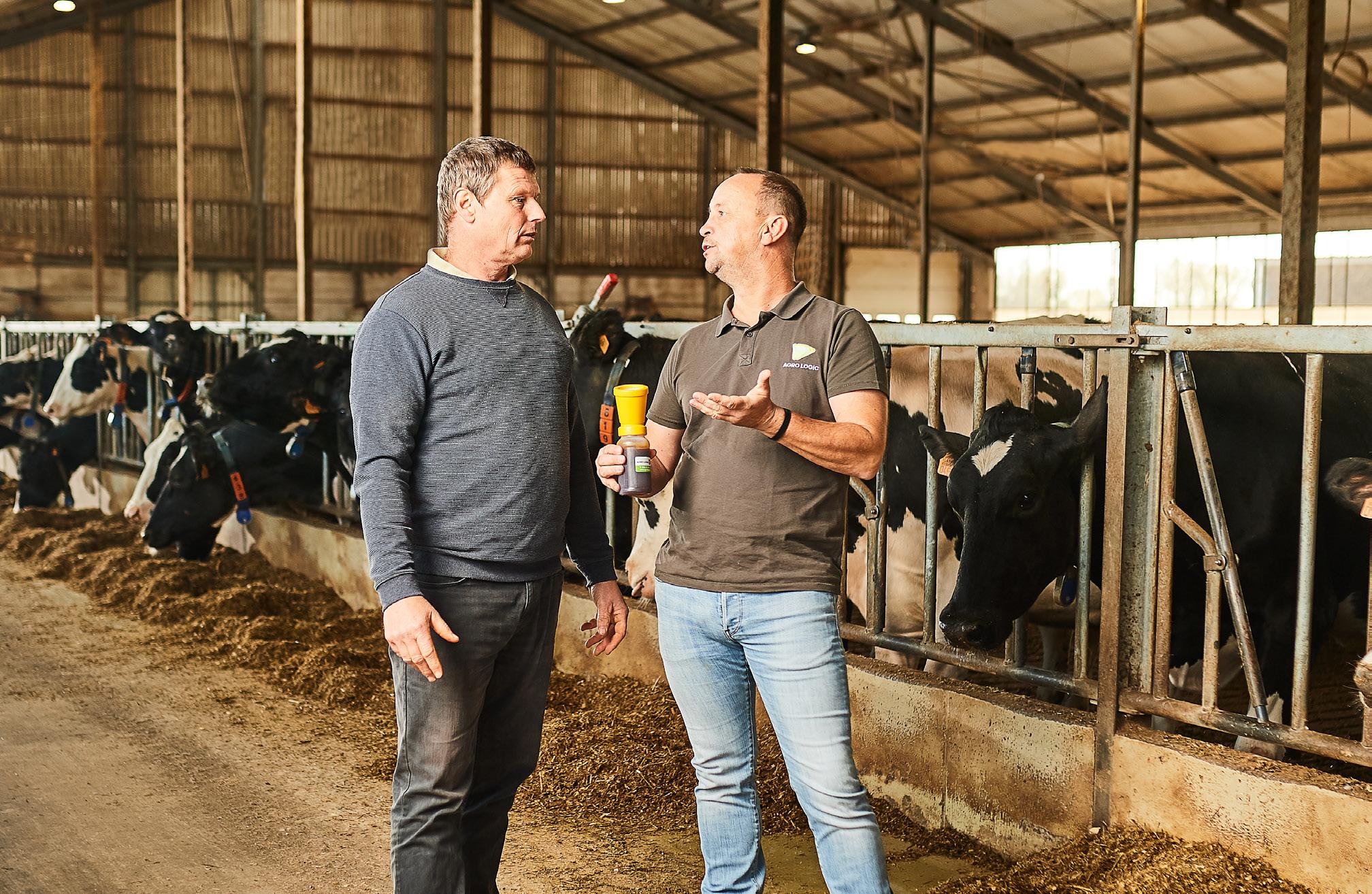
At Arvesta, we not only look out for our own experts, but also ensure that our suppliers treat their employees correctly. Whoever works with Arvesta declares their commitment to people, partnerships, and society.
Society is constantly changing and so companies need to ensure that their policies maximise the protection of human rights so that every employee can develop to their full potential. Arvesta's HR department vigilantly watches over this for our own employees, but we also extend this to the partner companies we work with. This is not optional and is based on contractually defined agreements.
Cedric Jacobs is the General Procurement Manager at Arvesta and is responsible for the procurement strategy of products not directly linked to Arvesta's production. He
builds collaborations with suppliers and partners, with a focus on a sustainable procurement policy. "This means that we look at both the price/quality ratio a partner can offer us, but also how that supplier treats people and the environment," Cedric says. The Supplier Code of Conduct (SCC) that Arvesta drew up with an accompanying code of conduct was updated and rolled out again in 2023. Every preferred supplier - the carefully selected partners Arvesta wants to work with in the longer term - signs an SCC and code of conduct before the cooperation starts and is expected to adhere to it. Preferred supplier = sustainable supplier.
But Arvesta wants to go even further. 80 preferred suppliers were presented with an extensive questionnaire probing the efforts made by these suppliers in terms of human rights and the environment. "The aim is to process the answers from that survey and arrive at a sustainability score for each supplier. This should help us make a good analysis and take the right elements into
account when choosing suppliers," Cedric says. A second step will be to also do audits to check whether the companies that agreed to the SCC and code of conduct are effectively complying with them. The degree of compliance will be an important tool to even better weigh which suppliers fit Arvesta's values.
 Cedric Jacobs General Procurement Manager
Cedric Jacobs General Procurement Manager
We analyse which partners fit Arvesta's values.

Our material impacts, risks, and opportunities (5)
Positive impacts
• Advocate for fairer earning models for farmers.
• Enlighten farmers on agricultural trends/developments and help them with specifications and implementation of new legislation or customer requirements.
Risks
• Costs related to evolving human rights due diligence regulations (e.g., Corporate Sustainability Due Diligence Directive).
• Human rights violations in the value chain.
Opportunity
• Improved customer loyalty by focusing on the (social) welfare of farmers and building a relationship of trust.
We work to avoid situations whereby communities near our company - or any company in our value chain - experience negative impacts from our business activities.

In harmony with local communities
From our shops and production sites to the origin of our raw materials and the end user of our products and services, Arvesta has an impact on various regions and the people who live there. We do our utmost to not only minimise that impact, but go further and turn it into a positive contribution.
A first step in respecting local communities is to get to know them. The group of stakeholders Arvesta interacts with is very diverse. First and foremost, it is about the local residents who live near our shops, production sites and offices. But we don't lose sight of the wider chain either. In turn, our suppliers and customers also have an impact at local level, for which they have a direct responsibility and Arvesta has an indirect responsibility.
Bart Michiels is the Director of Real Estate and works every day with his team to find, (re)build and manage Arvesta's production
sites and offices, as well as the 200 Aveve shops. "When choosing or developing a new building, we naturally take into account local residents and the environment. Getting a permit from the competent authorities is not easy today, because the requirements are high. Yet we manage to meet them and even offer added value," says Bart. "Our production sites are located in SME or industrial zones and comply with all conditions regarding the limitation of noise, dust, and traffic. In order for our presence there to blend in as much as possible with the surroundings, we plant green screens that refresh the streetscape."
The Aveve and Eurotuin shops are obviously in places of commercial interest to reach customers, but even there our impact is low. So, we ensure that deliveries can be made in a very efficient and non-disruptive way. "Because, compared to a large supermarket for example, we have relatively lower customer traffic, we can reduce the size of the car park and the impact on mobility. So local authorities like to see our shops coming," says
Bart. Moreover, employees are encouraged to come to work by bike and can charge both their cars and their electric bikes there. "Today, 108 charging stations are in operation in the car parks of our shops, production sites, and offices, but we want to be able to increase that number to 150 by 2024."
Living in harmony with local communities is not just about practically curbing potential nuisances, but above all about working to make a positive impact. We strengthen communities and we do this together with our employees. Within our Fit@Arvesta programme, for instance, we set a goal every year to achieve a sporting goal together. If this succeeds, a total of 10,000 euros goes to an organisation working for society. As of 2024, employees themselves can propose a charity close to their heart. Each quarter, one organisation will be chosen in this way. As a leading player in the agriculture and horticulture chain, we also want to make the most of our opportunities to support people who could use a stepping-stone into the
We keep our impact as small as possible and aim to turn it into a positive contribution.
labour market. For several years, we have been a sponsor of YouthStart, a project that helps young people find their way to studies or work that suits their dreams and abilities.
Leuven is the cradle of Arvesta. Not only is it the location of our headquarters, but it is also home to our largest retail branch and an important distribution centre. As a founding member of Leuven 2030, one of the driving forces towards a climate-neutral Leuven in 2030, we see it as part of our responsibility to further green our hometown. In this context, we seek out local collaborations with partners from inside and outside the agriculture and horticulture sector. We are also one of the driving forces towards a climate-neutral Leuven. But we do not limit our enthusiasm for this to our hometown. For instance, in 2023, we donated 10,000 euros to sponsor River Cleanup, a global network whose mission is to clean rivers, and participated both virtually and physically to support local cleanup events. Around our site in Andenne, 25 employees rolled up their sleeves to clean
up litter. Through small but impactful actions, our support for this project - apart from financially - is also a way to make people think before they throw litter on the ground.
Bart Michiels Director Real Estate
Our material impacts, risks, and opportunities (1)
• Promoting local food chains and regional sourcing, production, and processing through, for example, certifications and the 'Rural Delights' range in our shops.
A respectful, transparent, and fair policy around data use is of great importance within our organisation and is closely monitored accordingly.

Data is precious and we treat it with care
Personal data is a precious commodity and we treat it accordingly at Arvesta. To protect information about our employees, customers, and Arvesta itself, we are committed to constantly improving the way we work.
context and have taken many initiatives to optimally manage and secure data from suppliers, customers, partners, and Arvesta itself.
The General Data Protection Regulation (GDPR) is European legislation that has been in place since 2018. But because the world and the amount of data we exchange with each other is changing so fast, this data protection legislation is constantly evolving. At Arvesta, we are therefore doing everything we can to be fully in tune with this rapidly changing
Ensuring good management "We communicate clearly with our customers and suppliers about how we manage the data they share with us in a secure manner, in line with legal requirements. We weigh up very carefully which information can - and may - be kept and which cannot. It is mainly our sales and marketing departments that have a lot to do with processing customer and supplier data; for example, when they send newsletters or organise trade fairs," says Ilse Winters, Legal Director at Arvesta. "We extend that
We train our employees to further improve data protection.
line to our own employees, because they too are obviously entitled to have their data processed correctly. Our Human Resources department keeps a close eye on this."
Handling data correctly is not just about making good agreements about what we store, but also about how we protect this information. This is an important task for Arvesta's IT department, which ensures that all data managed by Arvesta is safe from external influences. Fortunately, they are not alone in this, as all Arvesta employees are also aware of their share of this responsibility. For instance, training courses, refresher sessions, and tips are provided to help Arvesta experts handle data correctly. Moreover, the IT department regularly sends out test emails that check whether employees are susceptible to phishing and gives them tips on how to recognise and spot these outside influences.
 Ilse Winters Legal Director
Ilse Winters Legal Director

Our material impacts, risks, and opportunities (2)
• Data breaches or cyber-attacks leading to reputational damage, operational disruption, and legal and regulatory consequences.
• Customers expect increased digitisation and automation across the food chain for transparency and traceability.
We promote the availability of sufficient, affordable, safe, and healthy food and fight under- and over-nutrition.

To the table!
Arvesta's central position in the agri-food chain means that we bear a responsibility to ensure quality and sufficient food is available at an affordable price. We do this by supporting farmers and horticulturists with our expertise, as well as by inspiring consumers through our shops.
Access to healthy and sufficient food is a basic right, but unfortunately it is not yet evident to everyone in this world. At Arvesta, we work every day to further improve the food supply for people and animals, and we are committed to several focus areas to achieve this.
Our Agri & Horti Business Unit helps farmers and horticulturists to grow crops more efficiently, economically, and in an environmentally friendly way. From seeds, fertilisers, and crop protection to mechanisation and crop procurement, Arvesta ensures that farmers are optimally supported throughout the growing season. With our innovative solutions - such as Smart Farming, Varicare,
and Fertigation - we can offer added value to farmers to optimise their production process. Through our ecological greenhouse systems and mobile gullies, we ensure that horticulturists can produce food even more efficiently and sustainably on a limited area.
We extend these efforts to the animal sector. By developing high-quality animal feeds and advising farmers on the optimal rations, we help improve animal health and boost their performance. The result is increased efficiency and yields, which not only benefit the farmer, but also support local food supplies.
However, Arvesta is not only in touch with agriculture, but also has close ties with the food processing sector and consumers. Through our Aveve shops, we inspire people to get started in the kitchen themselves. Not with any ingredients, but with high-quality and locally produced raw materials from right here at home. By 2024, for example, a quarter of our flour mixes will consist of wheat sourced from Arvesta's Carbon Farming
5
Our material impacts, risks, and opportunities (3)
Positive impacts
• Advocate for and certify sustainable labels.
• Focus on reducing sugar and salt.
• Provide access to healthy, affordable food to help reduce under- and over-nutrition.
programme. Our broad presence in the chain is not only important to offer added value from field to fork, but also means that the traceability of our products is on point.
Employees deserve the best
However, the story does not stop there. Our 2,300 Experts in the field give their best every day and we aim to support them by providing healthy and tasty local food. At our headquarters in Wilsele, you will find a range of fair and local lunches, snacks, and drinks that nourish our people from the inside out. We also take steps to prevent food waste. And just as we do with products for human consumption, we offer pet food in low-cost packages so that nothing goes to waste. To this end, several of our Aveve shops partner with 'Too good to go', the app that combats food waste by helping shops find interested customers to facilitate the quick sale of products which are at their expiry date limit.
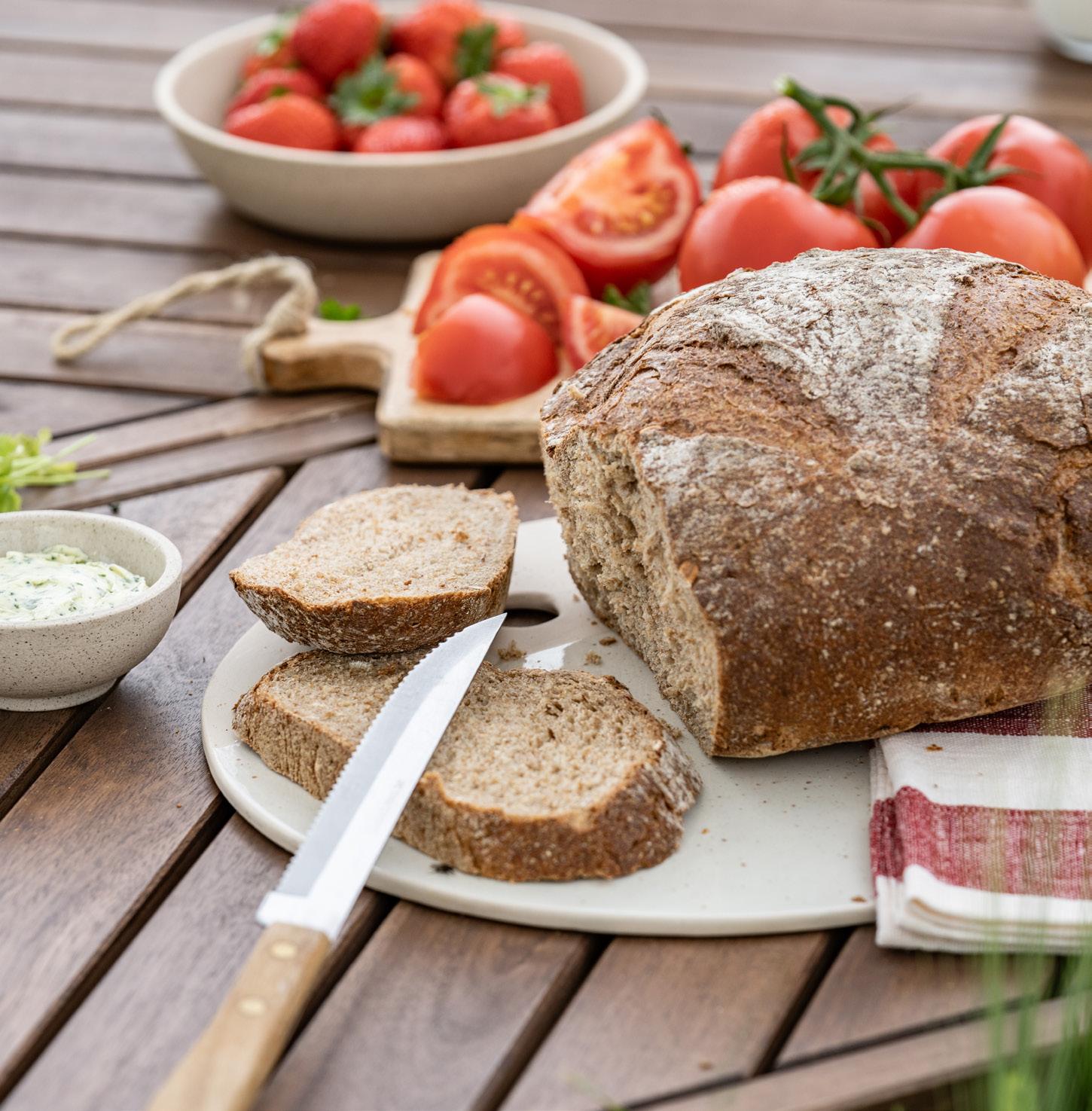
Healthy food for people and animals - that's where we make a difference.
We deliver maximum satisfaction by communicating closely with customers, listening to their experiences, and tailoring products and services to their expectations,

Monitoring and improving customer satisfaction is a daily activity
Our Aveve shops were voted 'Retailer of the Year' by customers for the first time in 2023. In the previous three years, we also won the award for 'Best Retailer of Belgium'. We achieved this recognition not only by continuously monitoring customer preferences, but by working every day to make our shopping experience even more exceptional and sustainable.
‘What gets measured, gets managed’. We take this idea seriously in the Retail Business Unit, where we are fully committed to surveying our customers about the quality of their shopping experience. "Thousands of people a month take part in our measurements, providing us with valuable information that we can work with," says Peter De Mey, Director Marketing & Category Management at Aveve Retail. "This is how we arrive at a Net Promoter Score (NPS) of 72%, which is an exceptionally high result."
That NPS not only gives a final score but also provides insight into what customers perceive as the shop's main strengths and weaknesses. "It is clear that consumers really appreciate the expertise and friendliness of our retail staff. Customers say they can come to them for a warm welcome, but also for advice on problems in the garden, the kitchen, or advice on pet care." Aveve is not only betting on technical advice. "More than ever, we want to give our customers the desire to roll up their sleeves and create valuable moments of relaxation in the garden, kitchen, or with pets."
But even when there is work to be done, we do not shy away from the challenge. When our customer survey shows that certain shops score exceptionally high or low, we always check with the employees on site to identify the underlying reasons. Valuable tips can help to improve other stores and an action plan is developed for the working
Even when there is work to be done, we do not shy away from the challenge.
points. We also continually adapt the range in our shops to changing customer needs and preferences, which include an increasingly sustainable product range.
Customer satisfaction is not limited to the Retail Business Unit; the experiences of professional Arvesta customers are also central to our operations. Our mission to be the full-service partner of both farmers and horticulturists motivates us go flat out to nurture sustainable, fruitful partnerships every day. The results speak for themselves: John Deere was Belgium's best-selling tractor in 2023 for the second year in a row, and Arvesta was able to maintain its position as market leader in 2023 in both the Agri & Horti and Animal Nutrition categories, Arvesta was able to maintain its position as market leader in 2023 as well. We are proud to have received this vote of confidence from all our customers.
 Peter De Mey Director Marketing & Category Management
Peter De Mey Director Marketing & Category Management

Our material impacts, risks, and opportunities (6)
Positive impact
• Ensure high quality standards for all products manufactured and/or sold by Arvesta.
Opportunities
• Increase market share by maximising customer satisfaction and tailoring products and services to customer needs.
• R&D investment to develop new solutions that meet customer needs (growers, livestock farmers, etc.) while improving productivity and quality.
• Increase demand for products with better performance / different labels / certifications (e.g., nutriscore).
• Increase attractiveness to clients by focusing on sustainability and developing standardised ESG reporting.
• Reputation gain through election as Retailer of the Year Belgium and Best Chain Store.
While nobody is perfect, including at Arvesta, we pride ourselves on sincere and transparent policies that make forward-looking choices and avoid unfair practices.
We don't just want to follow the rules, we want to be one step ahead when it comes to balanced policies, strong management, and proper business ethics. We make clear agreements not only for our own employees but also for companies we work with.
Ethical business is not just about people. Animals also deserve a dignified and healthy life. By supporting farmers and hobby farmers with our products, innovations, and knowledge, we increase animal welfare in a way that also pays off in the long term.


We adopt transparent and sustainable business practices, focusing on all stakeholders in our company's value chain.

Acting correctly is an absolute must, but there is a lot involved. To meet the legal standards and preferably do even better, Arvesta works with concrete agreements and codes that our employees, management, and partners must adhere to. Not only do we roll these out, but we also evaluate and improve them regularly.
Of course, everything starts with producing and offering fair products and services. As a full-service partner of the farmer and horticulturist, Arvesta strives to strengthen
the sector and face challenges together. We do this by putting maximum effort into techniques and innovations that offer solutions for both ecological and economic challenges. Not only do we work towards stronger agriculture and horticulture, we also want to work within our own organisation in a way that respects people and the environment. Attention to diversity, inclusion, and a good work-life balance are central to our positive organisational culture. Integrity is not one of our core values for nothing. At Arvesta, we work honestly, ethically, and transparently. We believe in hard work and common sense, with respect for doing things the right way.
We believe in hard work and common sense, with respect for doing things the right way.
Our material impacts, risks, and opportunities (3)
• Advocate for fair, sustainable agriculture and animal welfare.
• Implement a sustainable procurement policy for all Arvesta companies.
• Strong cooperation with academia and research centres on innovation.
Ethical business is not just a task for management, it is a responsibility of every Arvesta employee. Ilse Winters, Legal Director at Arvesta, knows all about it: "We monitor what is going well and start working on areas for improvement when we find them. It is important that our employees are well versed in this story and are aware of the guidelines within the company and the relevant legislation. That is why we organise regular training courses and continuously develop our policies to keep them up to date. For example, our guidelines around fraud prevention, detection, and alerting were reviewed and rolled out again in 2023."
Ethical entrepreneurship also means that Arvesta assumes its responsibility within the value chain. We make high demands of the suppliers we work with; for example, in terms of working conditions and efforts that benefit the environment. In the Supplier Code of Conduct that we presented to some 1,400 suppliers in 2023, we also emphasise the legal
requirements regarding competition and the prevention of corruption or fraud. Through the Risk Management Tool we will roll out, it will also be possible to properly identify the risks involved in working with specific suppliers. For our preferred suppliers, we will make an even more in-depth analysis, linked to our sustainability strategy. In 2024, each of supplier will receive a score. This will allow Arvesta to make an informed choice whenever we enter into a long-term partnership. We are also committed to providing fair remuneration in return for the high standards we set.
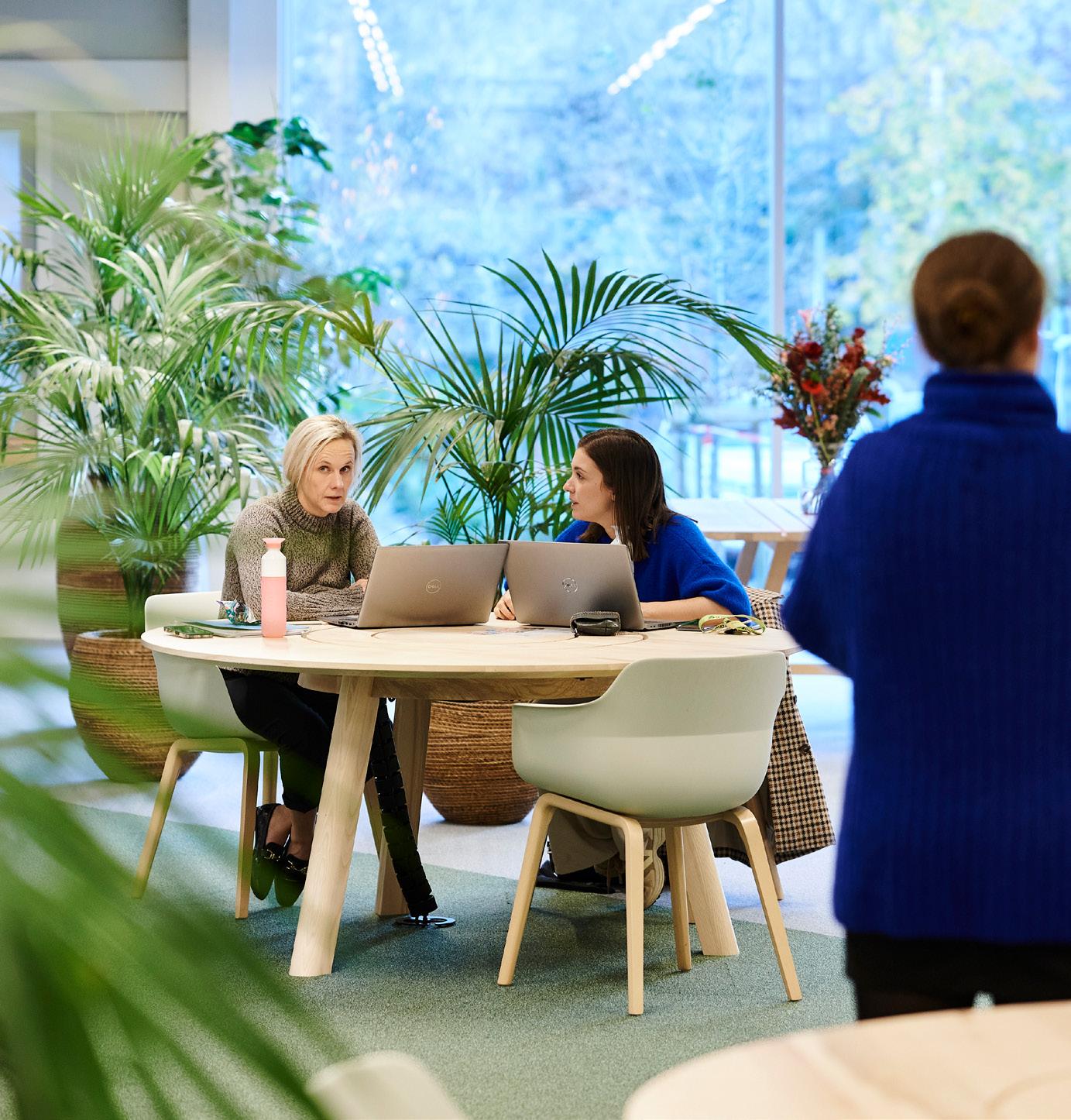
 Ilse Winters Legal Director
Ilse Winters Legal Director
We work with our partners across the value chain to improve animal welfare by considering the needs of the animal throughout its life cycle.

Healthy animals feel good about themselves and perform better. Whether you are a dog person or strive for the best care for your farm animals, Arvesta puts health first and is a pioneer in animal welfare.
Animal welfare is – justifiably - increasingly high on society's agenda. At Arvesta, we take the lead in looking for solutions that improve the health and welfare of both farm and hobby animals. We also keep the needs of the livestock or hobby farmer in mind and consult with various partners and experts. Our high-quality feeds are the basis of healthy animals, and they produce great results.
Dirk Bogaerts, Director Nutritional Solutions at Arvesta sees animal health becoming increasingly important. "We don't shy away from the debate and try to bring all partners to the table to find workable solutions," he says. "These must not only add value for the animal, but also be feasible in practice and fit the possibilities of the livestock or
hobby farmer. This is why we continue to work every day to improve our basic feeds with high-quality raw materials, while also bringing new concepts and additives to the market, which can give animal health an extra boost. Together with the farmer or owner, we make choices that suit both animals and farm." Optimal traceability is an important trademark for Arvesta, which is reinforced by our presence in all links of the chain, from raw materials and feed to the final animal products available in our shops.
In professional animal husbandry, the high-quality feeds marketed by Arvesta through several strong brands are the benchmark for health. "We focus on the right feed for every stage of life," says Jordi Lemmens, nutritionist for the pig sector at Arvesta. "For example, we can give piglets extra support during the weaning period when they switch from milk to solid food. At that time, their resistance is put to the test and we can make a big difference with adapted feeds." Another important issue in pig farming is castration of piglets to avoid boar taint. With Taintstop, a feed that drastically reduces the risk of boar
We do not shy away from the debate around animal welfare.
taint, Arvesta's Proxani brand has already brought a strong alternative to the market. At Arvesta, we are also already very far along in phasing out medicated feeds. In 2023, 99.7% of our total feed range was antibiotic-free and in 2024 we are heading for an even better result. This will bring us very close to our goal of being completely antibiotic-free by 2027.
Filip Van den Bossche is a nutritionist for the poultry sector and at Arvesta he is pulling the cart to also increase welfare in the broiler and layer sector. "Healthy animals and top performance cannot exist without each other. We are working every day to further improve that balance. We are going for better and better feeds, but without losing sight of the basics with the right raw materials. It is up to the farmer to choose which accents, if any, they want to add."


 Dirk Bogaerts Director Nutritional Solutions
Dirk Bogaerts Director Nutritional Solutions
Arvesta also jumped on the bandwagon for the Better Chicken Commitment concept for broiler chickens with longer life and improved animal welfare. For this, our strong Spoormans brand developed a modified feed scheme, OptiFair, with high nutritional value for healthy, domesticated animals.
We naturally extend this focus on health to our pet and hobby range. In addition to our balanced quality food, Aveve now also offers Charlie's Choice, premium dog food with fresh fish and meat, completely grain-free. In our pet food, too, we aim to offer a wide range of food adapted to each stage of life of the animal and to the preferences and possibilities of the owner.
Our material impacts, risks, and opportunities (4)
• Improving animal welfare (e.g., preventing rumen acidification and leg problems in cows) by producing healthy and balanced animal feed.
• Reducing antibiotics in animal feed to prevent antibiotic resistance and treatment of healthy animals.
• Improving animal welfare through value chain cooperation (incl. development of animal welfare labels) and by selling pet products that contribute to the health and happiness of companion animals.
Opportunity
• Products that improve animal welfare.
Filip Van den Bossche Nutritionist Poultry Jordi Lemmens Nutritionist Pigs
This 2023 Activity Report shows that it was a year of remarkable achievements but also challenges. Our team's steadfast dedication and collaborative spirit have been essential to making progress. Looking to the future, our ambition remains unchanged: to drive innovation, promote sustainability, and cultivate robust partnerships.
Under the motto "Stronger Together - Boots On", our Experts in the field continue to create a long-term future for our farmers, equipped with pragmatic and innovative solutions. The results of our work translate into improved returns for our farmers, satisfied shoppers in our shops, and healthy, fair food on the table. But this is just the beginning. Our ambition extends further.
We want to be a forerunner in addressing the challenges our customers face today. Our solutions are not only good for our people and customers, but also for our planet. We wholeheartedly embrace our 20 ESG priorities and strive to maximise awareness and engagement among our (inter) national employees and stakeholders. These goals will be meticulously woven into policy
frameworks and action plans to ensure full compliance with the CSRD. Together, we are moving towards a future in which ecology and economy go hand-in-hand, leaving an indelible mark on tomorrow's world.
The Leadership Team
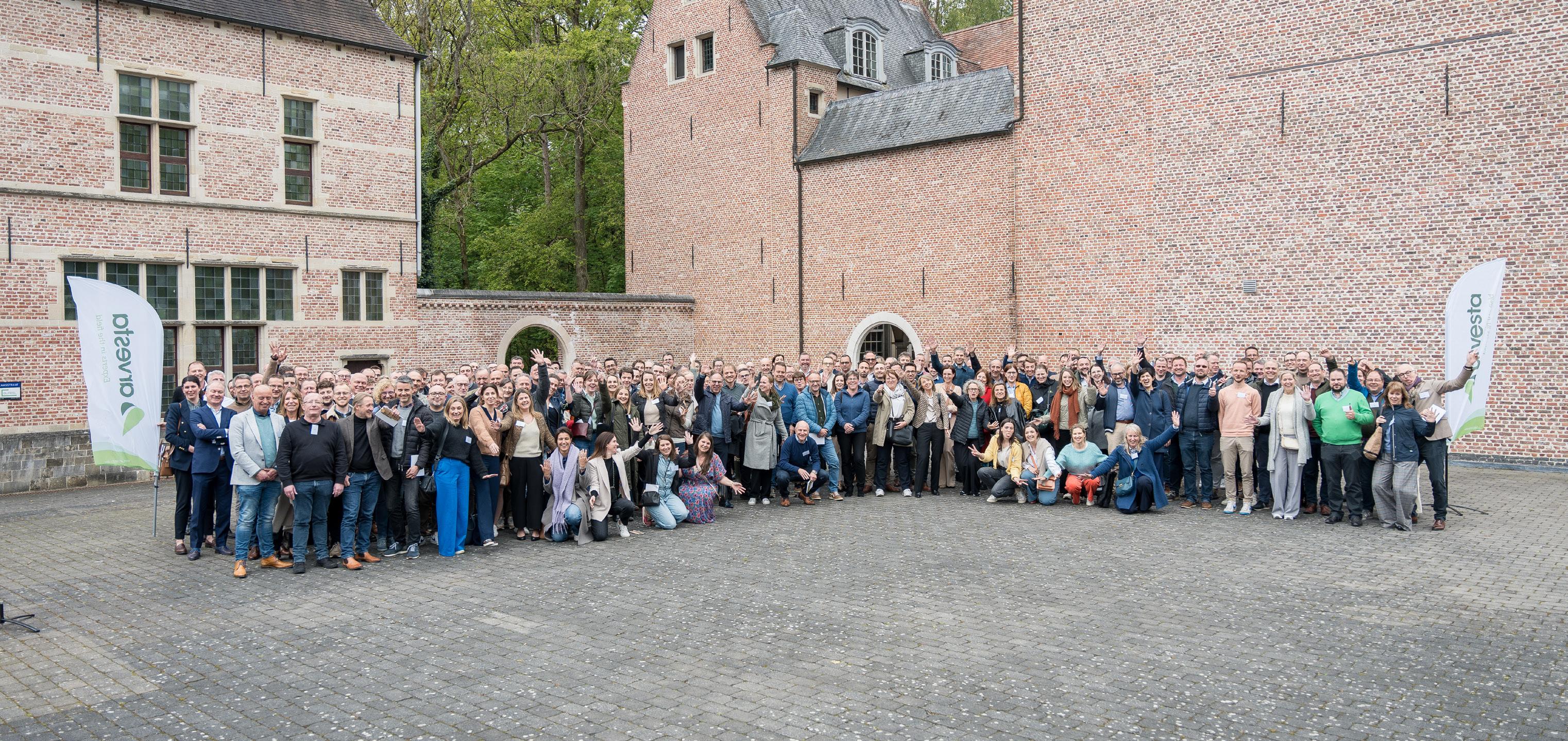
For the preparation of the double materiality assessment, we relied on Arvesta BV's financial consolidation scope for reporting year 2023, even though the financial consolidation scope can - and is likely to - evolve before reporting year 2025. In case of significant changes to the financial consolidation scope by reporting year 2025, an update of the double materiality assessment will be required.

Reporting period:
Publication of Activity Report 2023 in 2024 (reporting: 1 January 2023 – 31 December 2023)
Publication management: Stéphanie Deleul - Arvesta
Sustainability advice: KPMG Belgium www.kpmg.be
Concept and creation: 3gunna Studio 3gunna.com
Editorial: Nele Kempeneers www.pennenvrucht.be
Photography: Ben Celis - Arvesta Jonathan Vahsen www.jonathanvahsen.be Kris Van de Sande www.krisvandesande.be
Printing: Sustainable printing zwartopwit.be

Questions or feedback?
Contact: Stéphanie Deleul +32 (0)476 94 35 65, stephanie.deleul@arvesta.eu
For more information: www.arvesta.eu
Aarschotsesteenweg 80
3012 Wilsele, Belgium
info@arvesta.eu
www.arvesta.eu

Stéphanie Deleul Corporate
